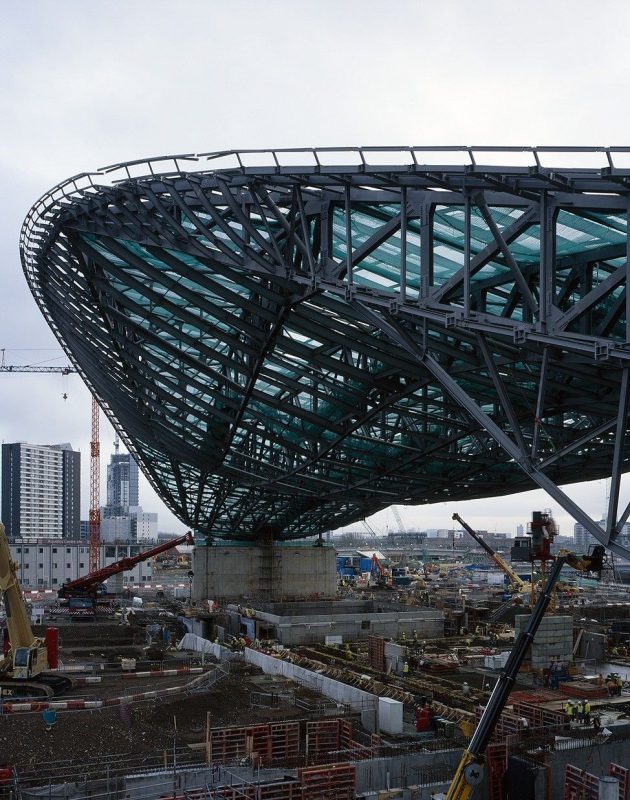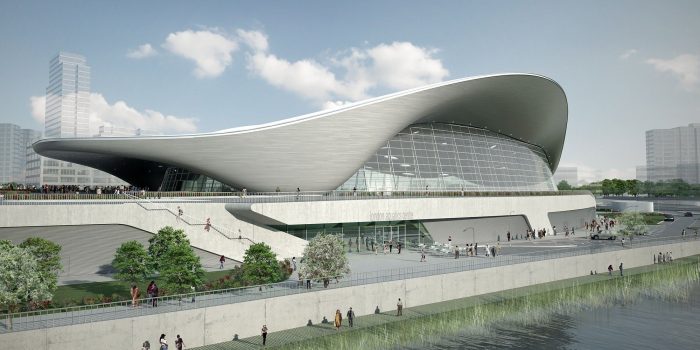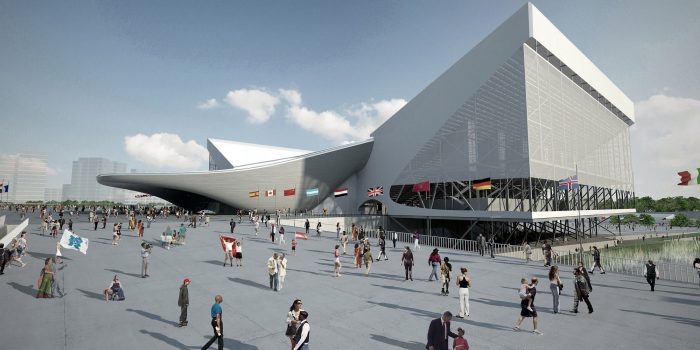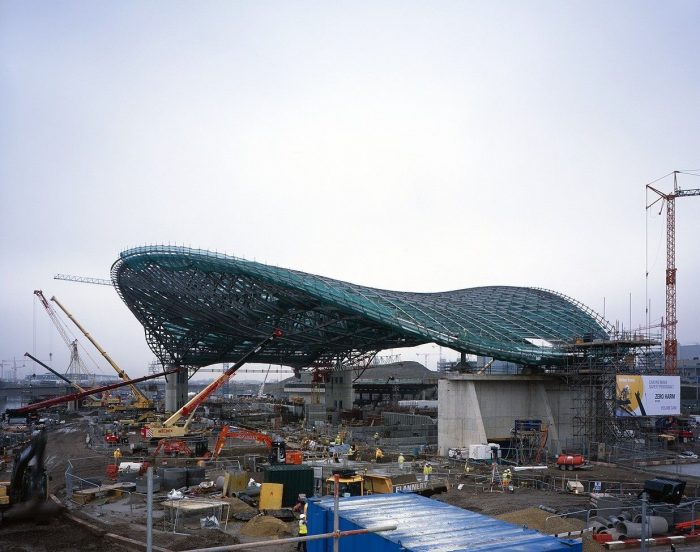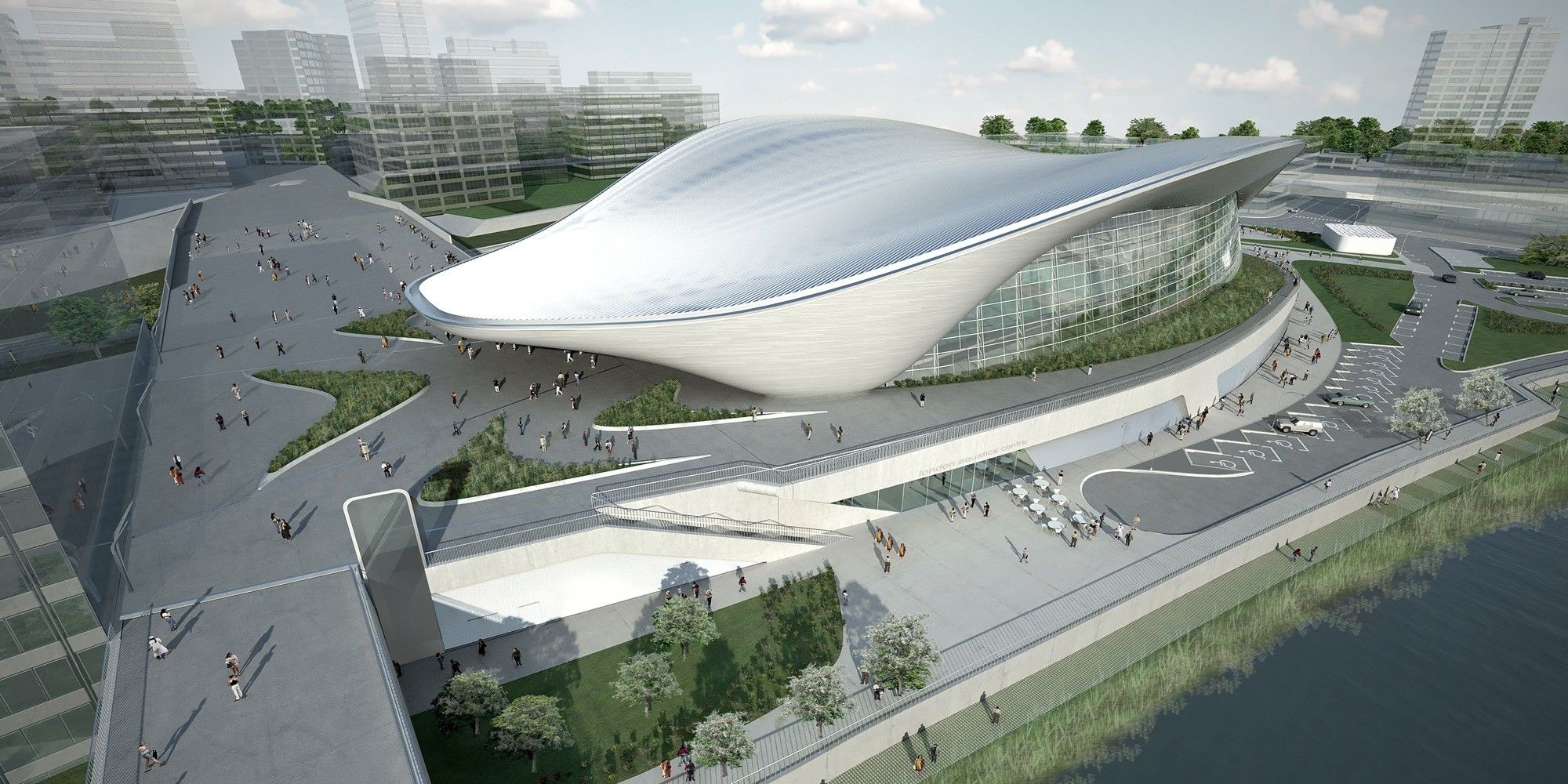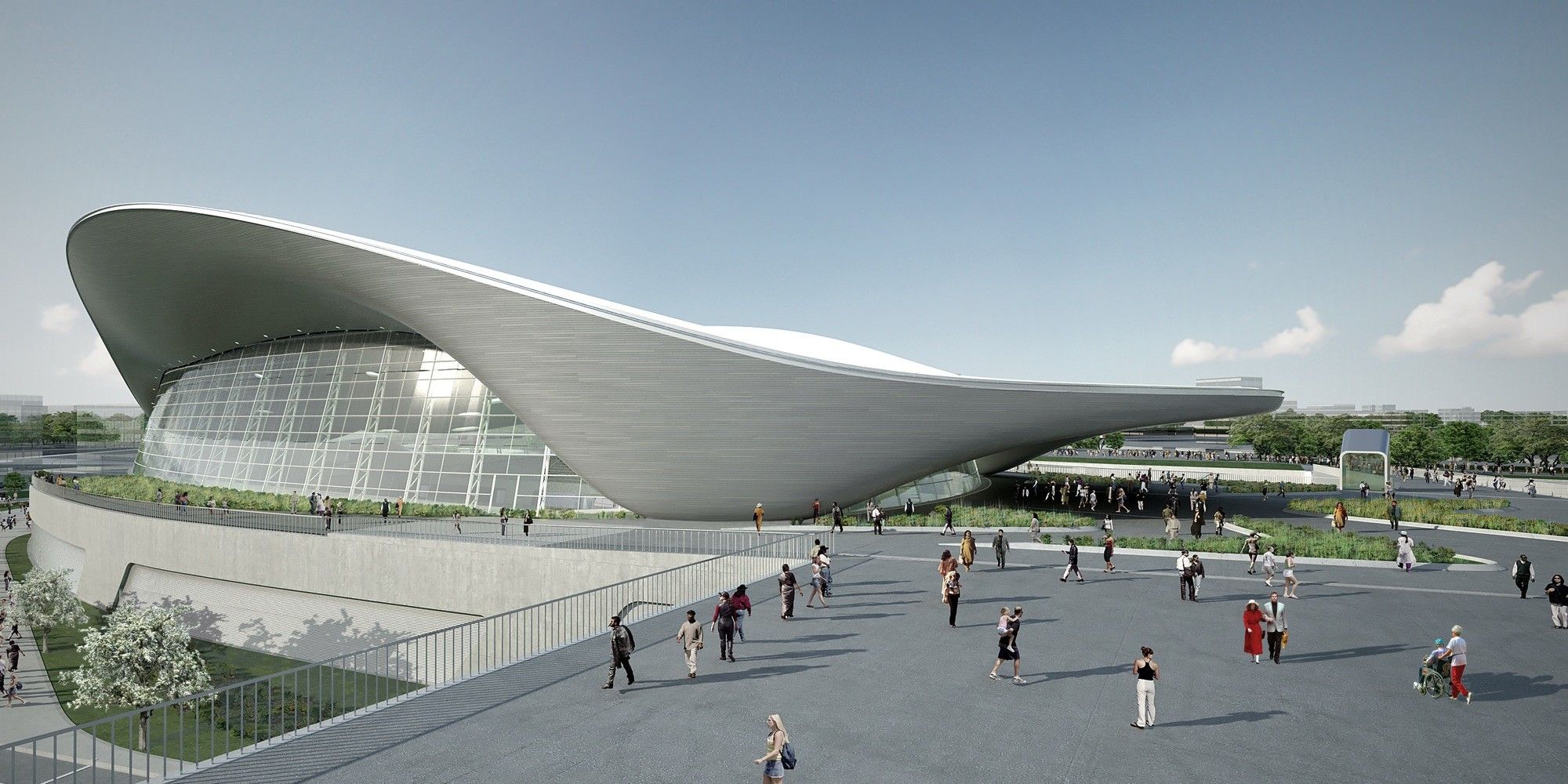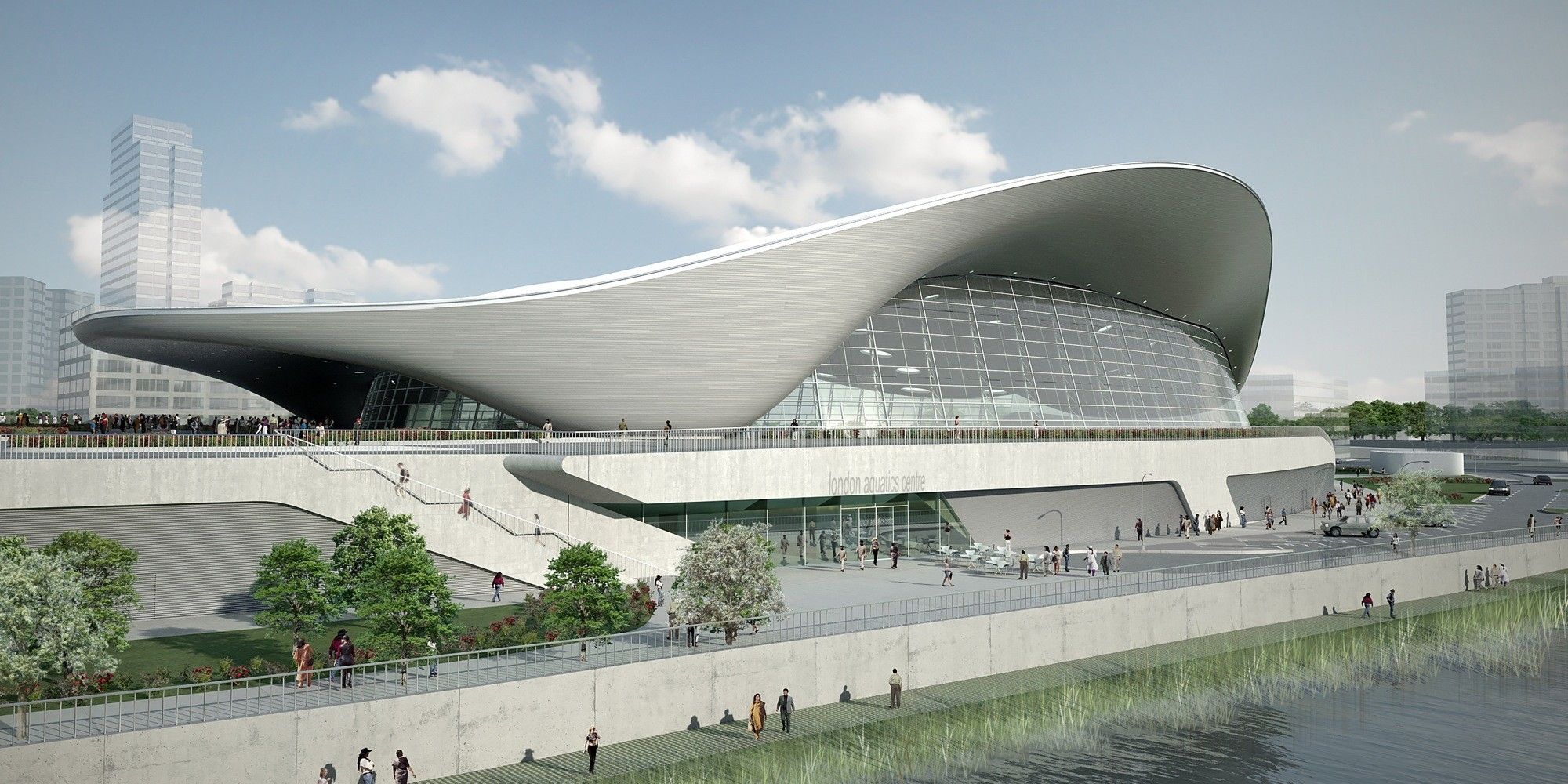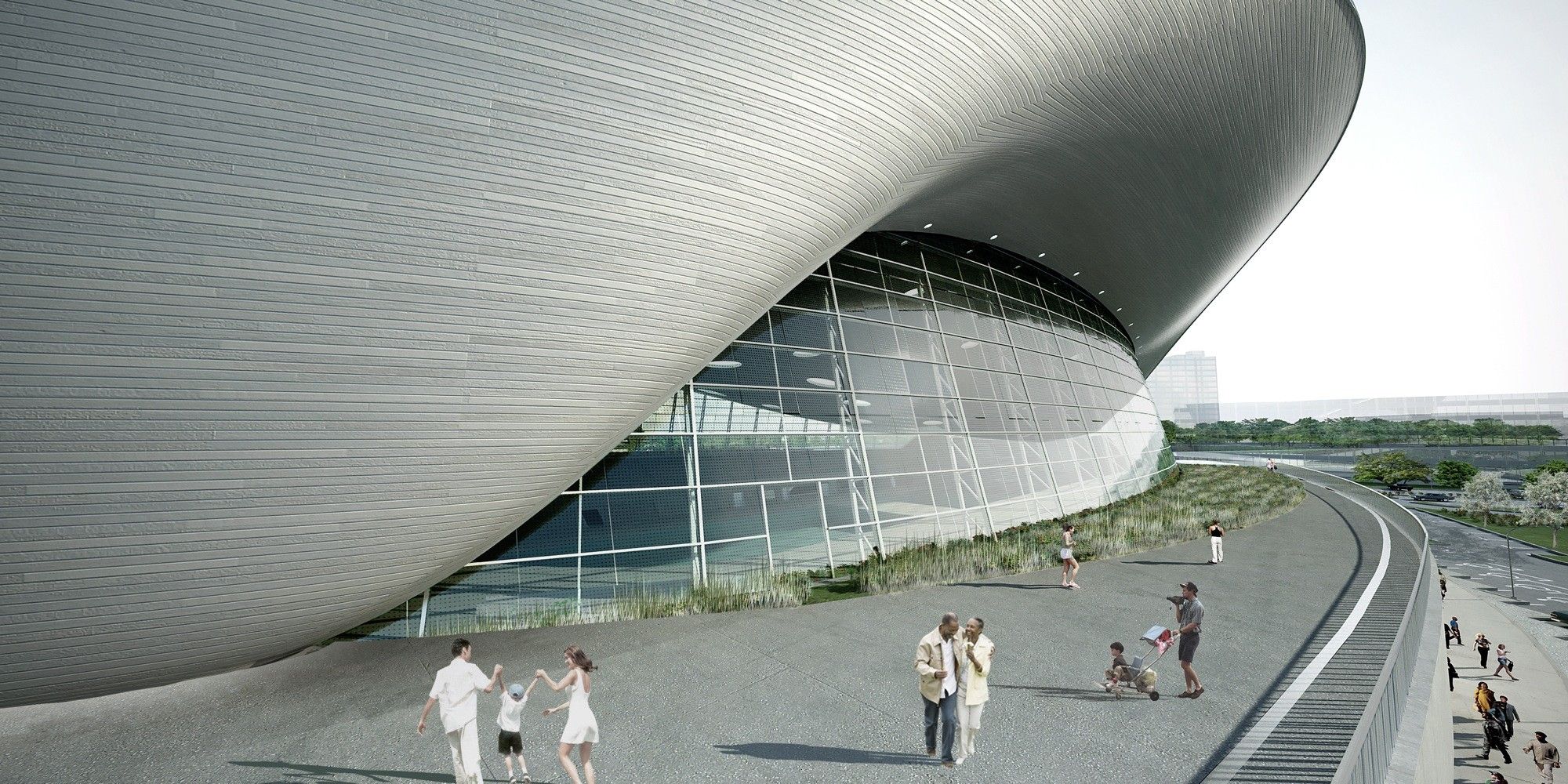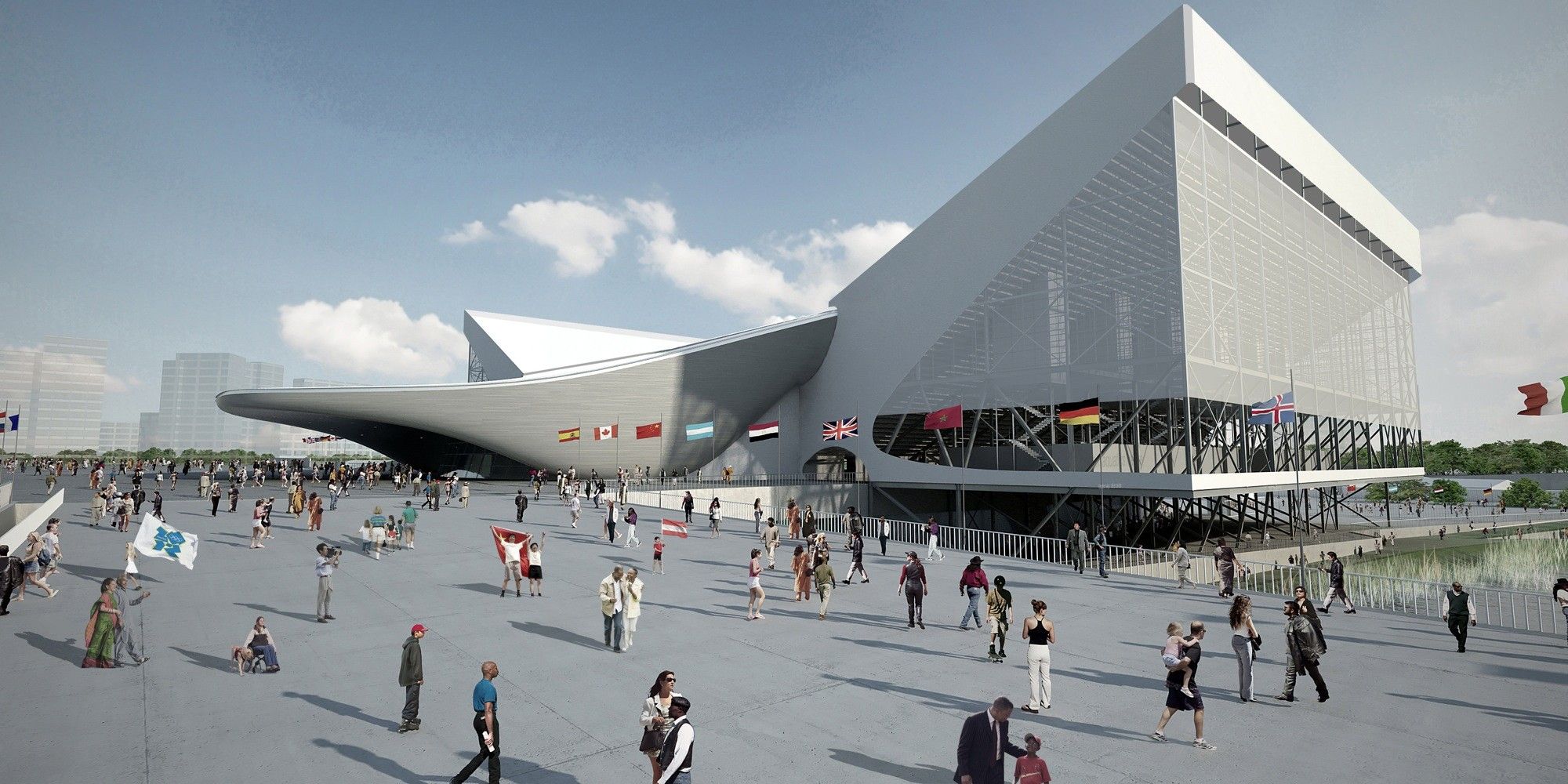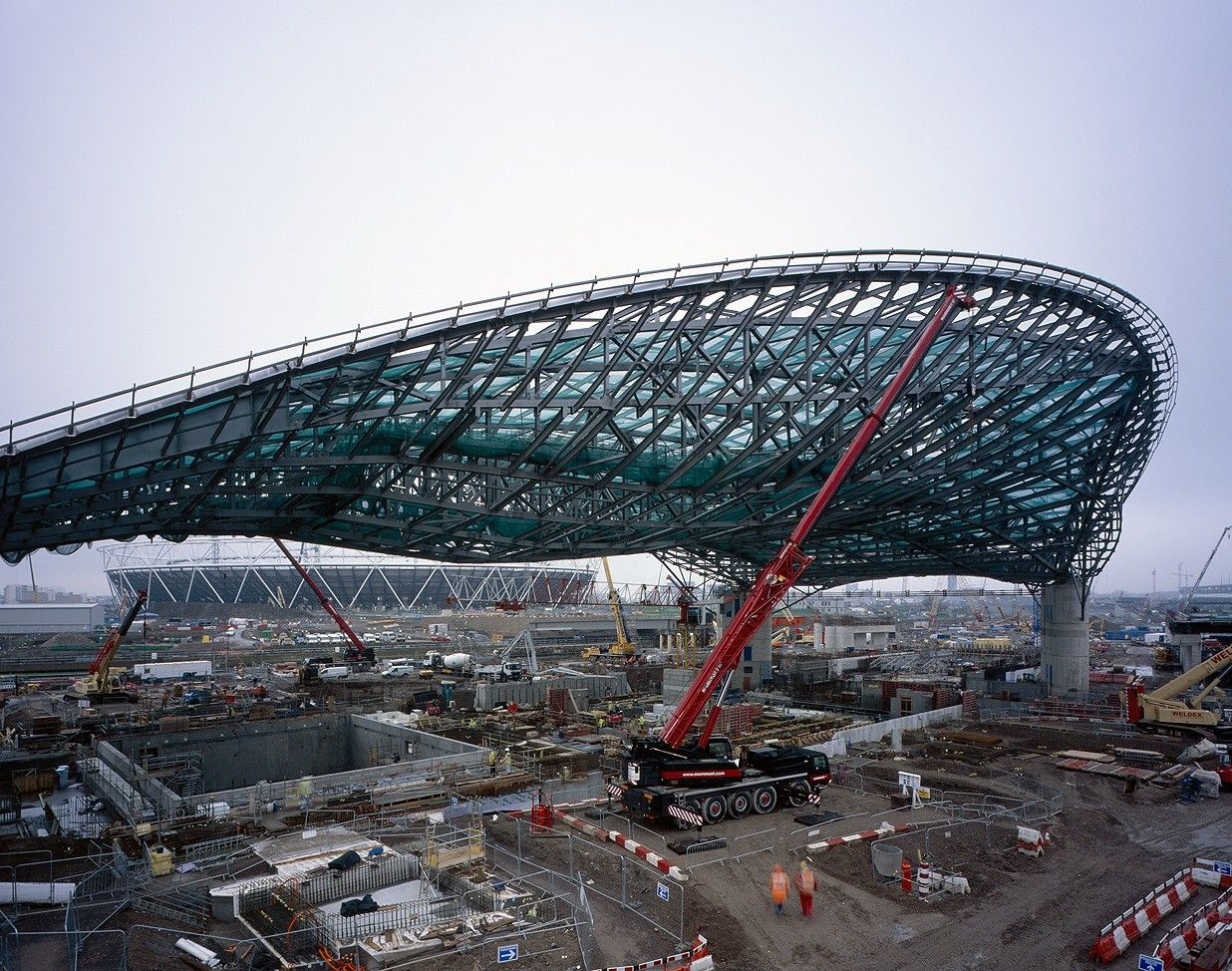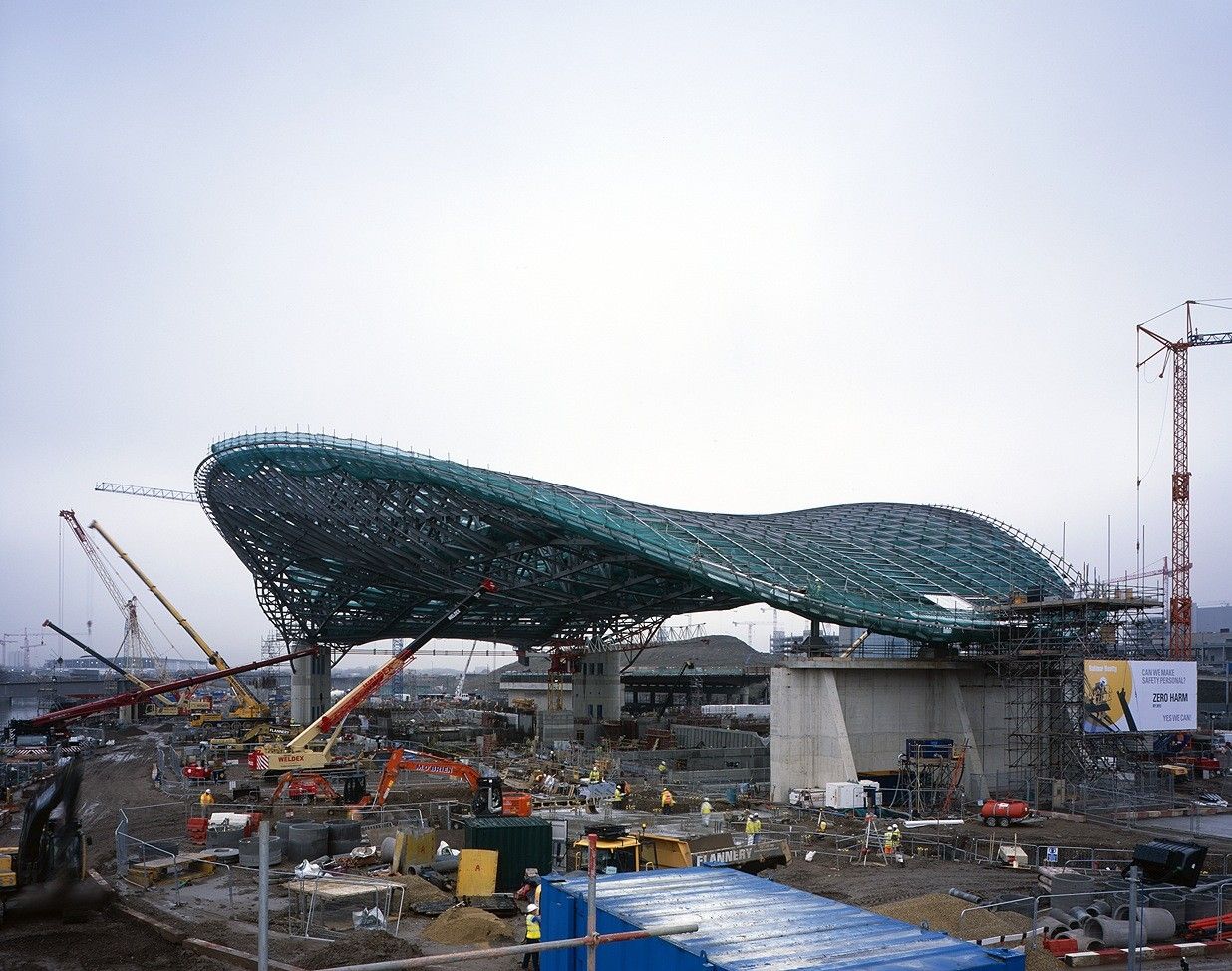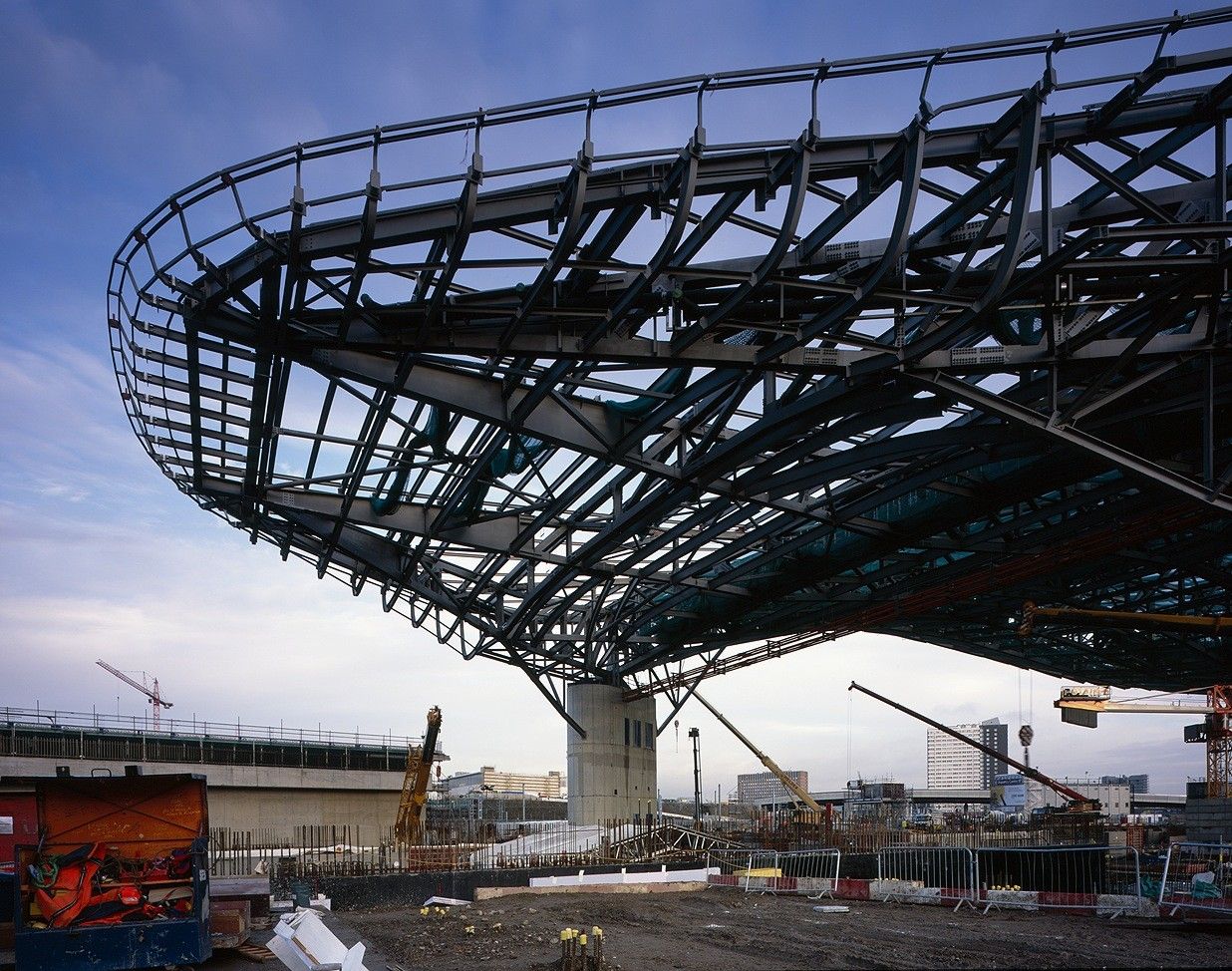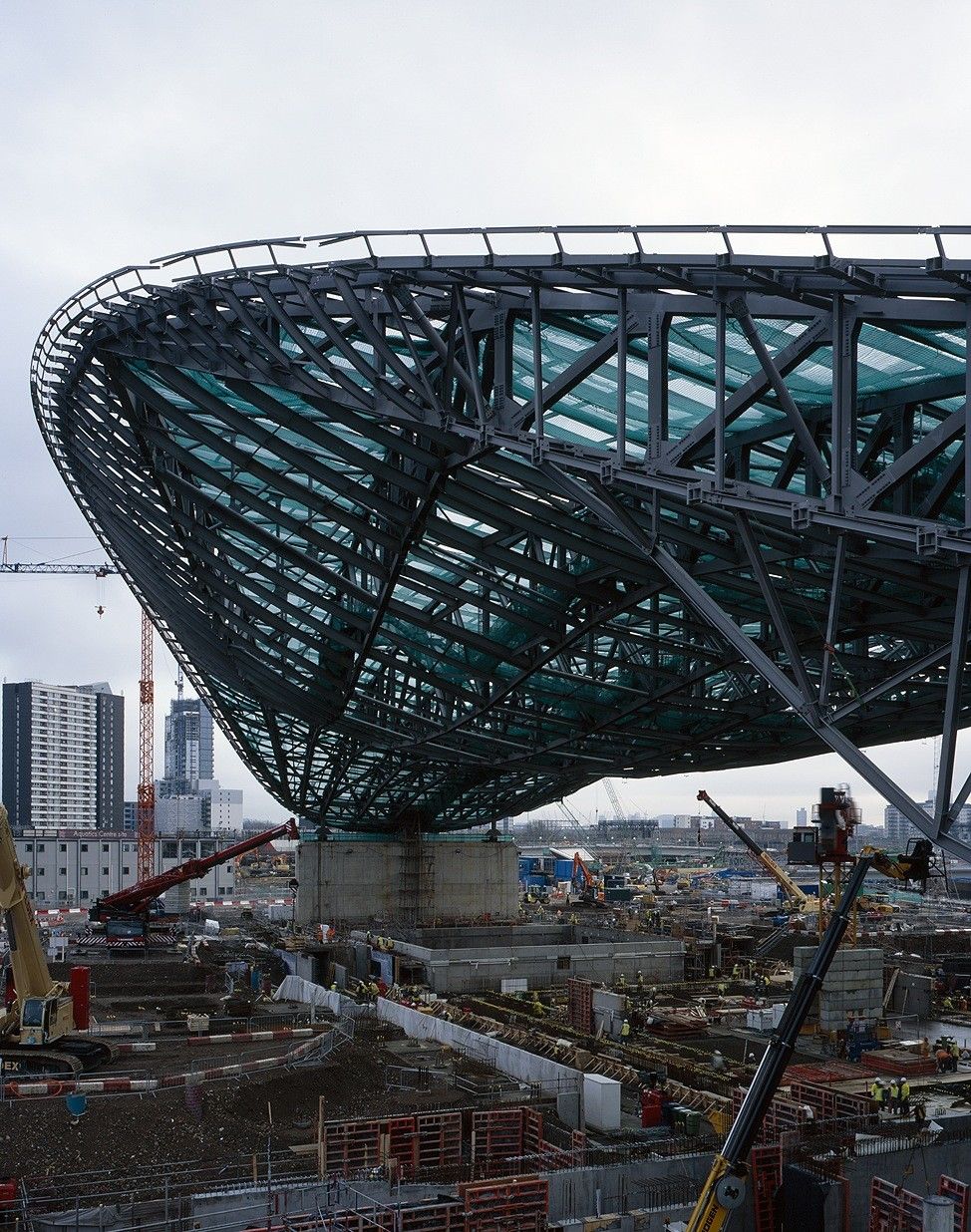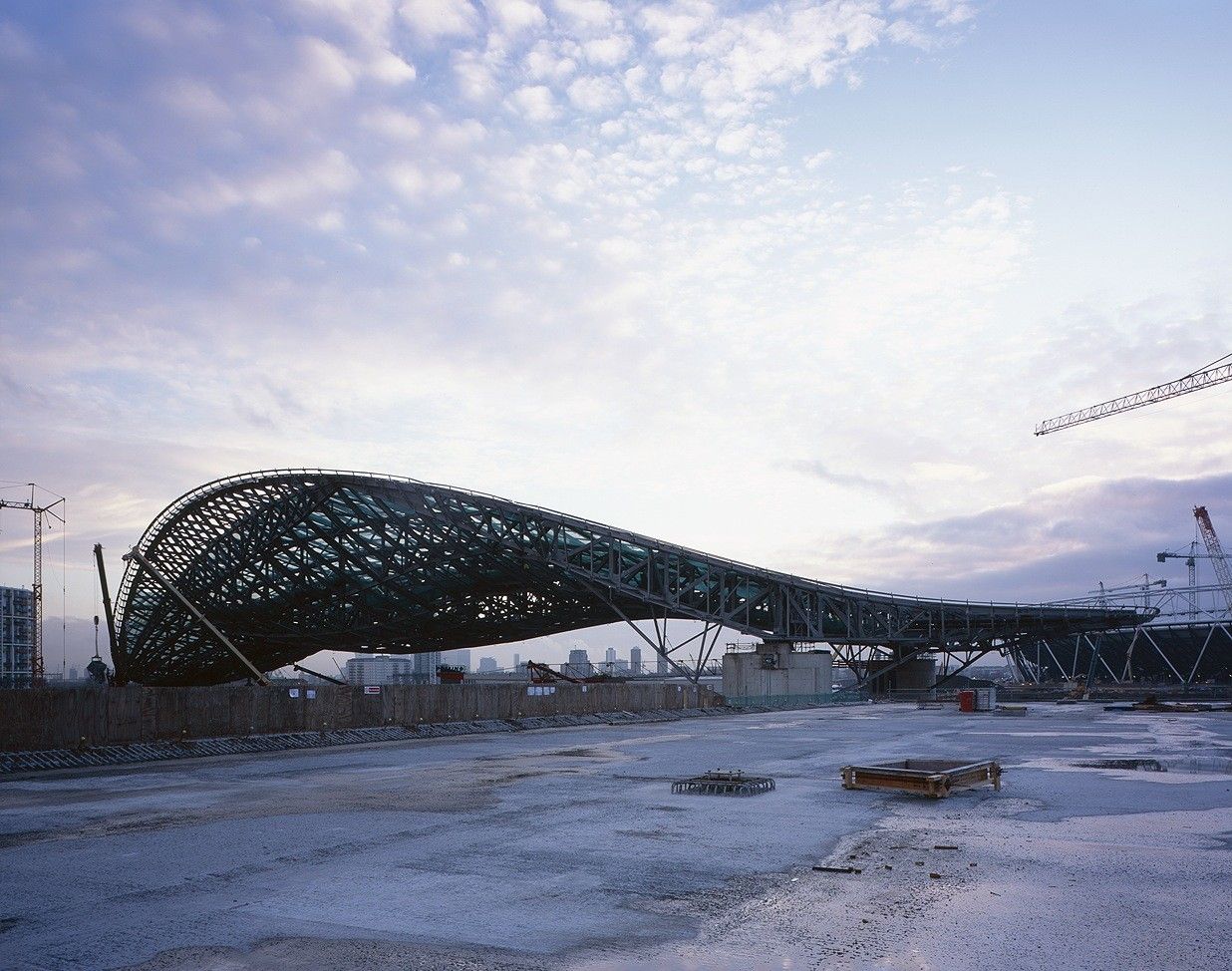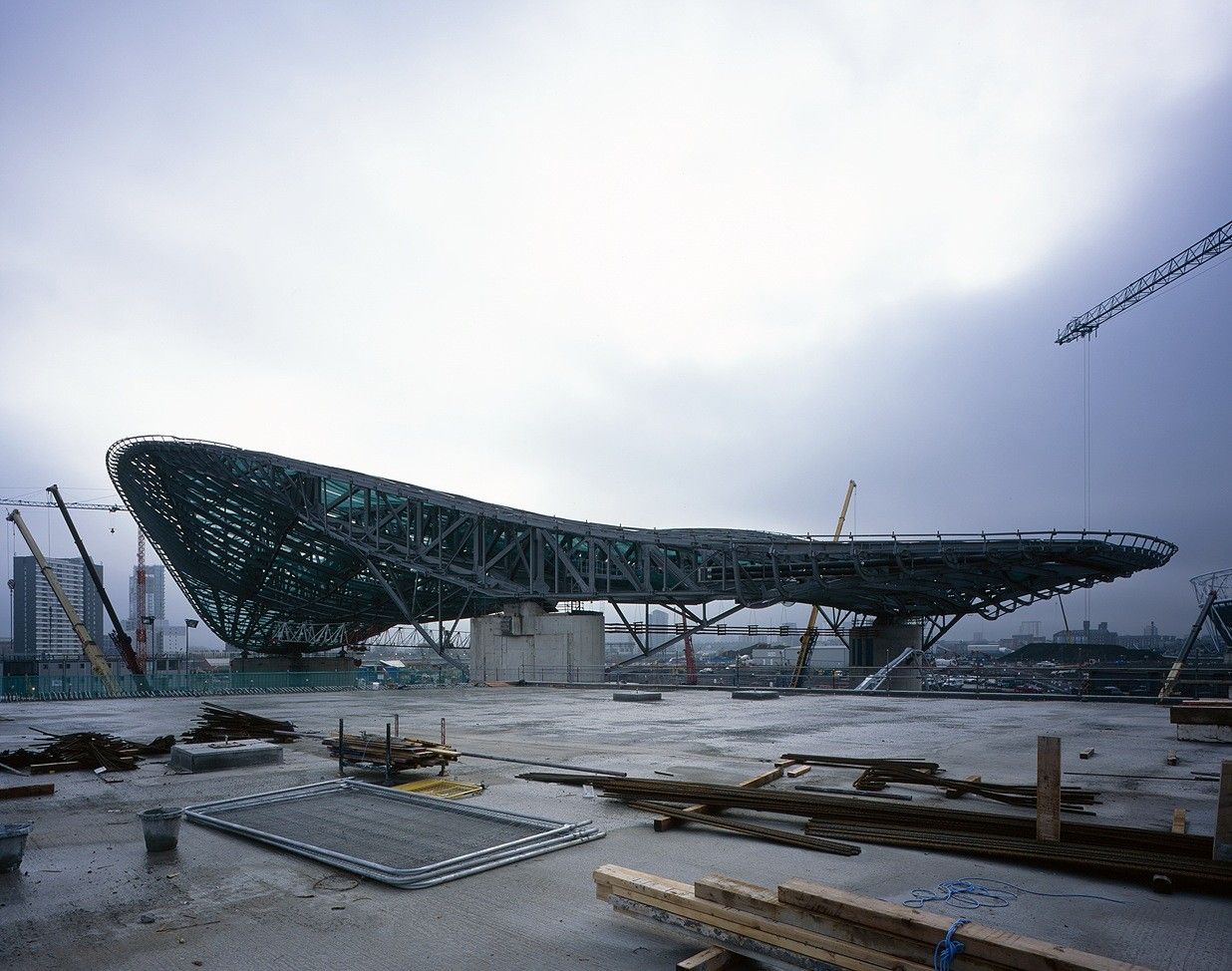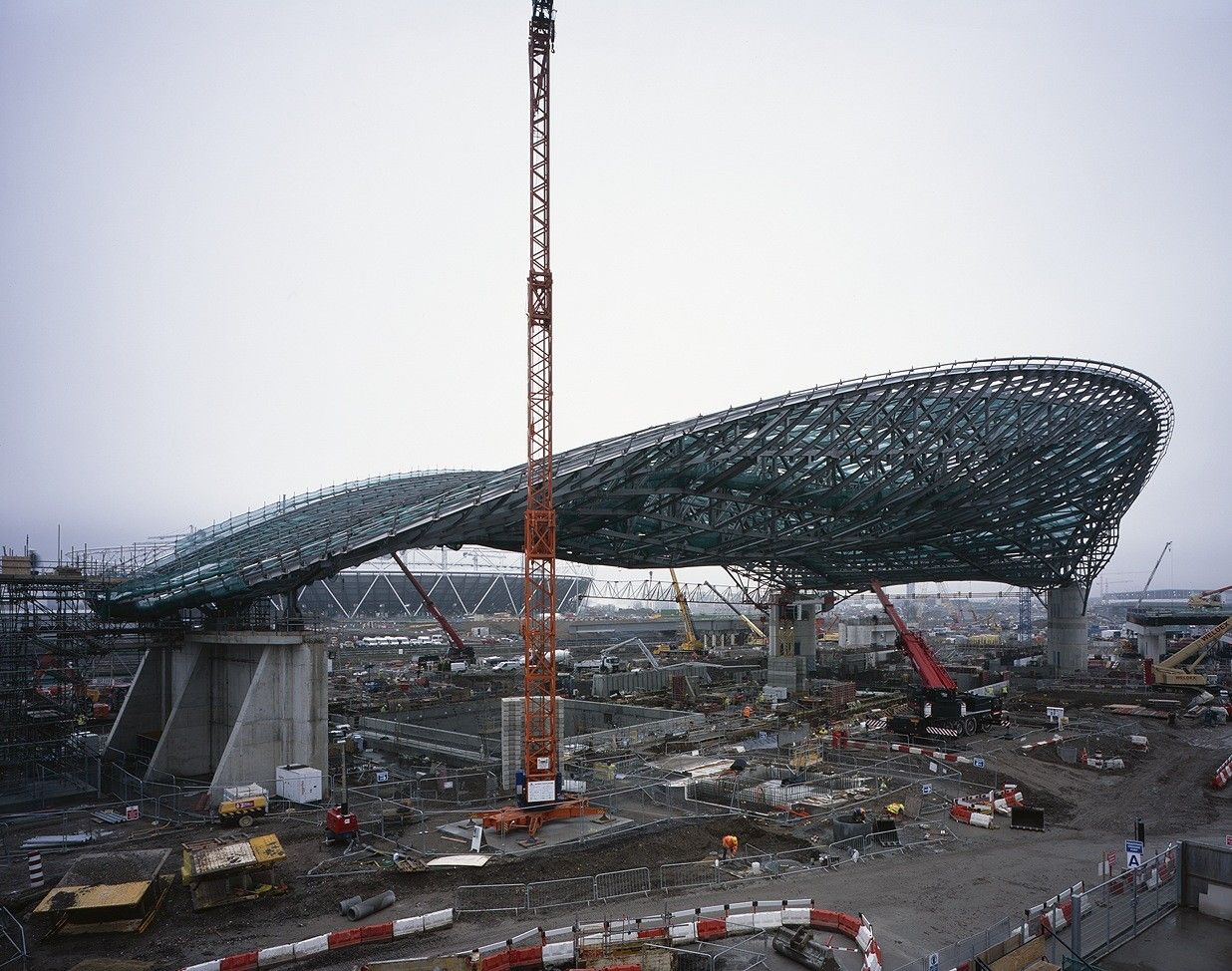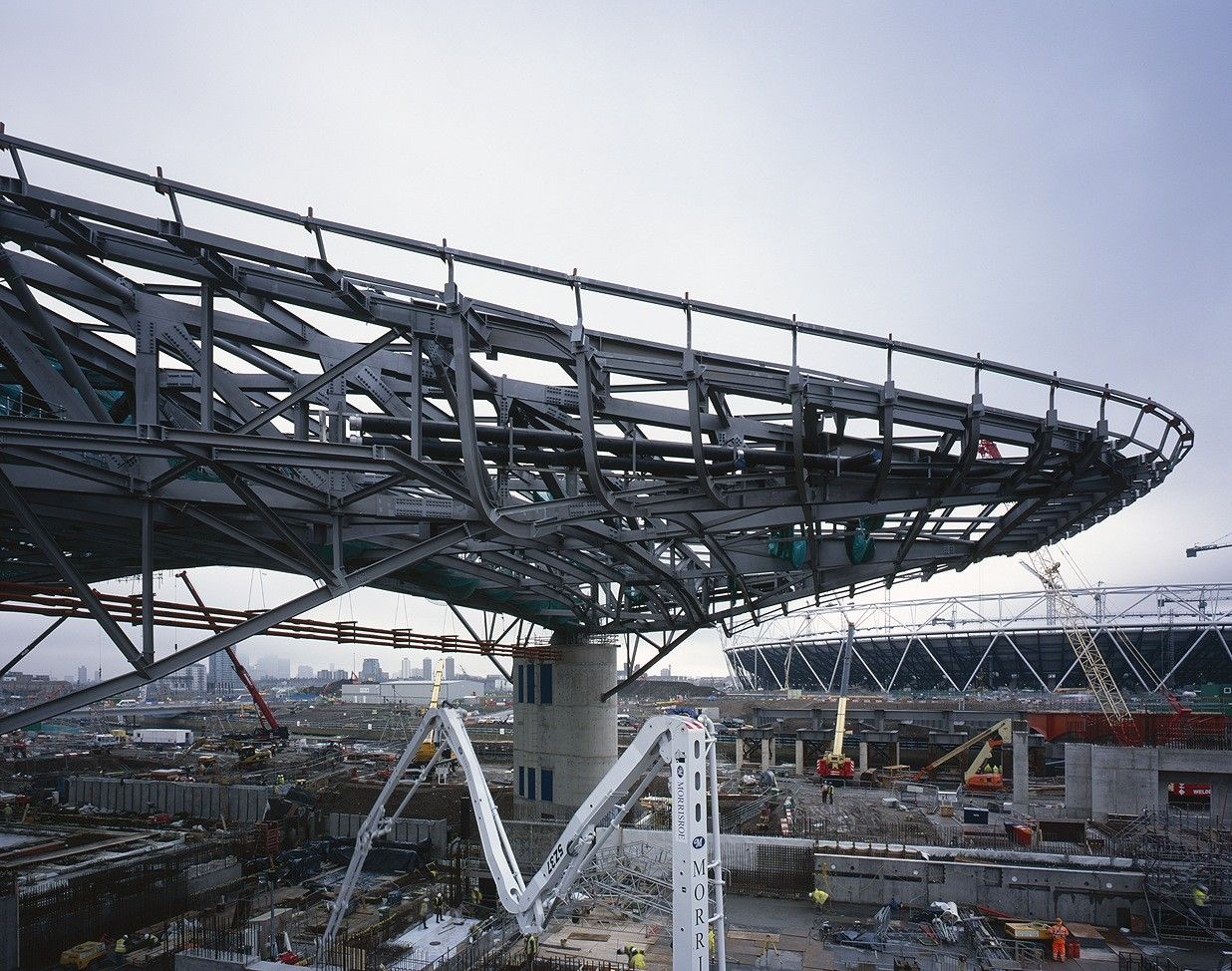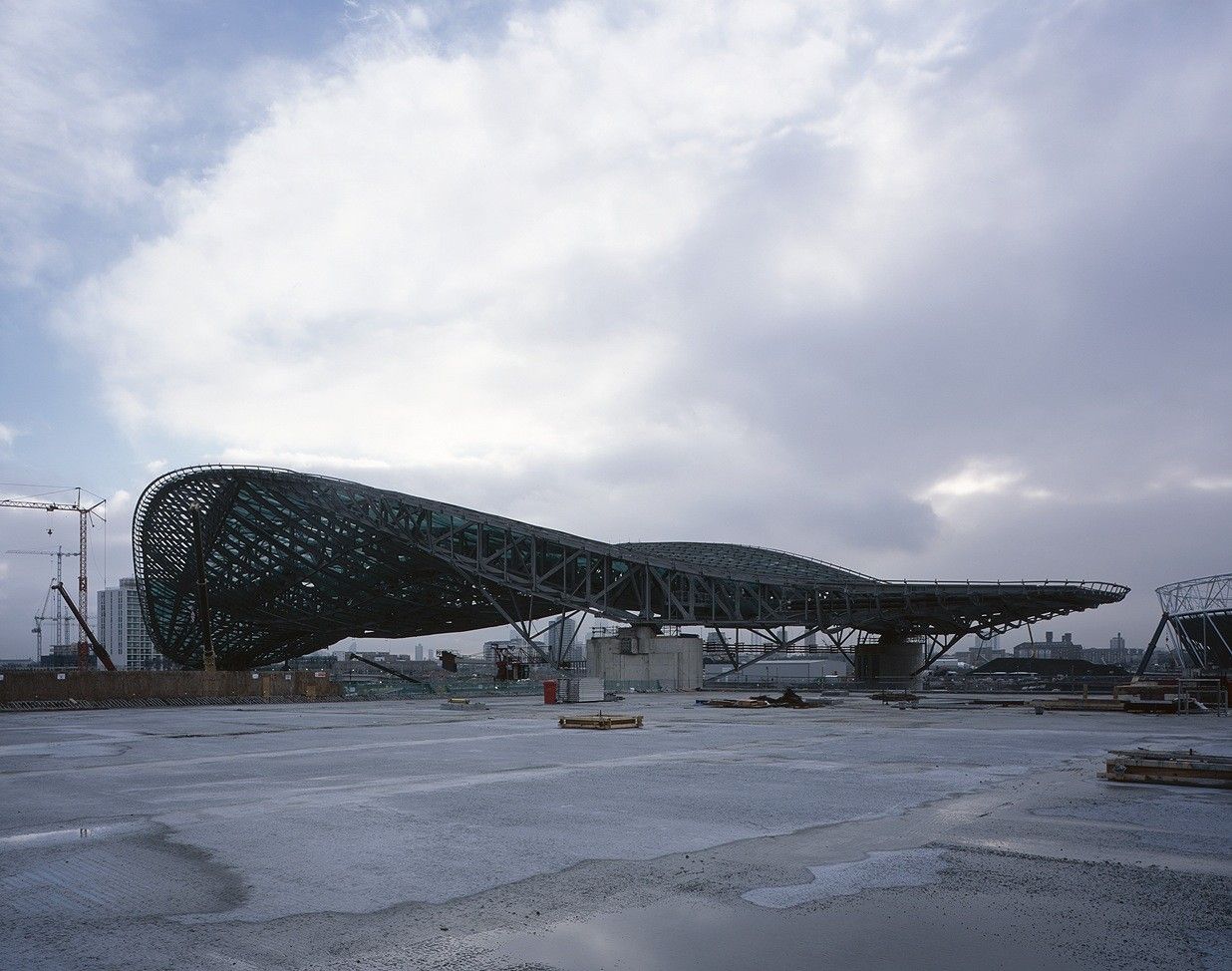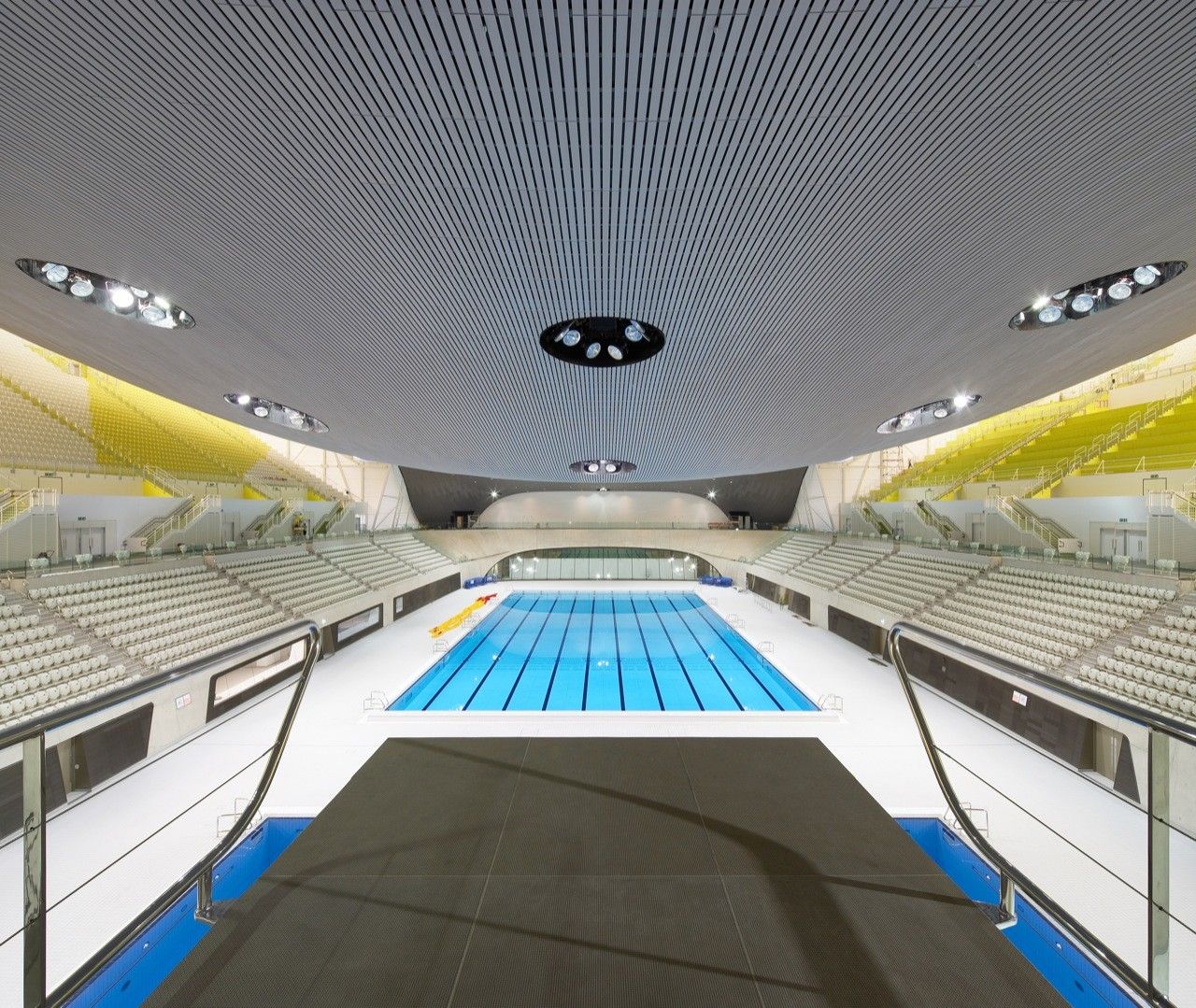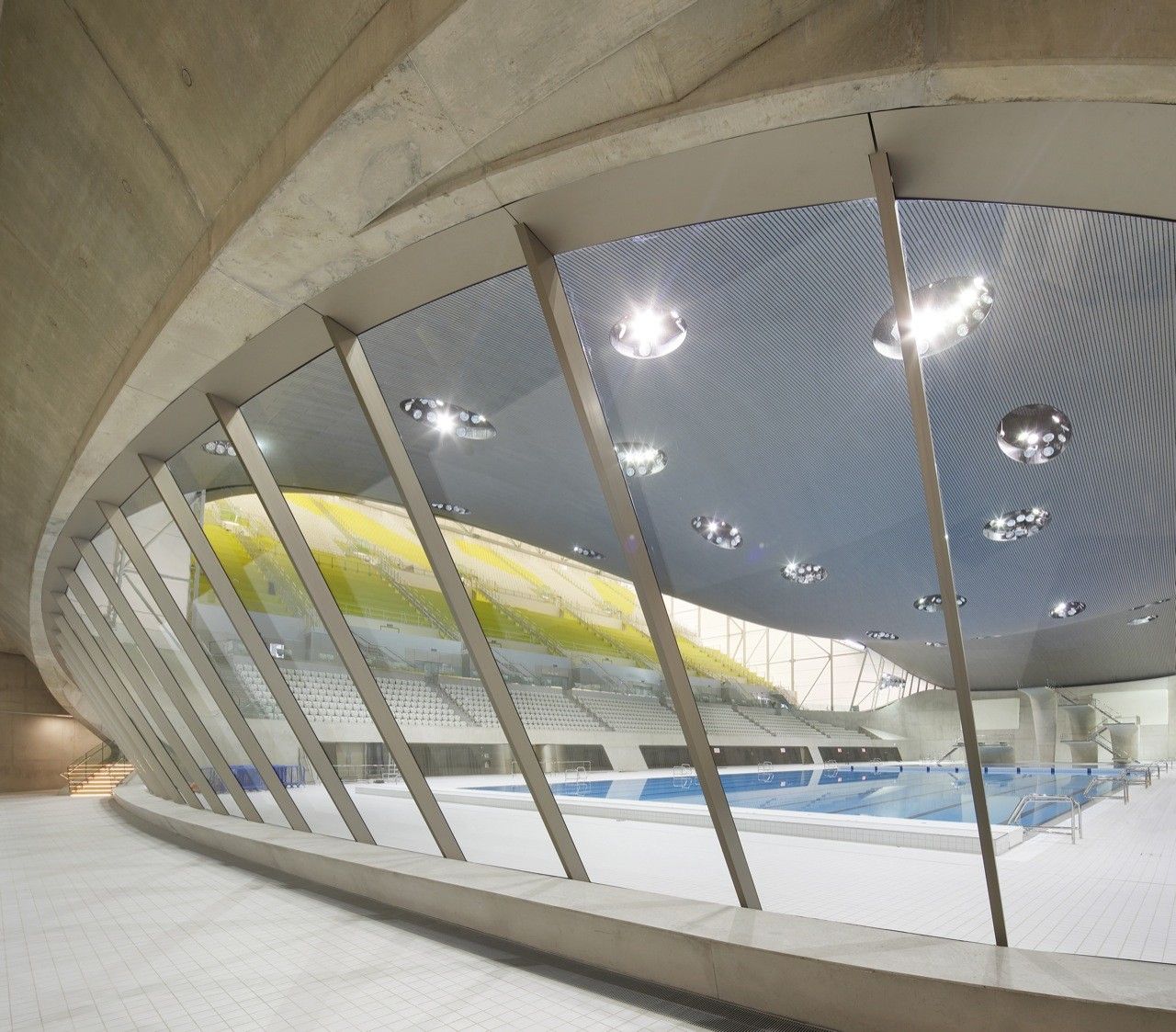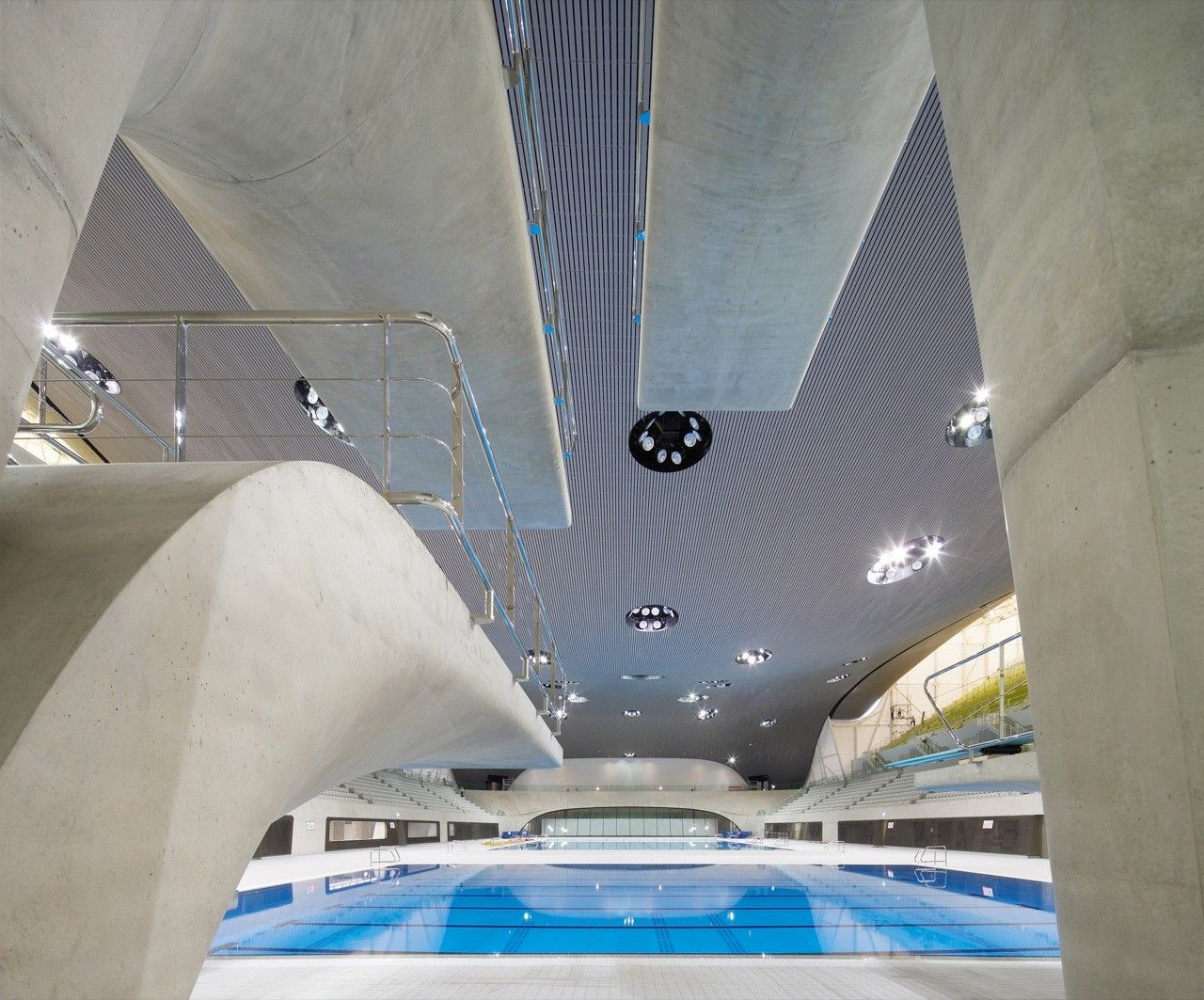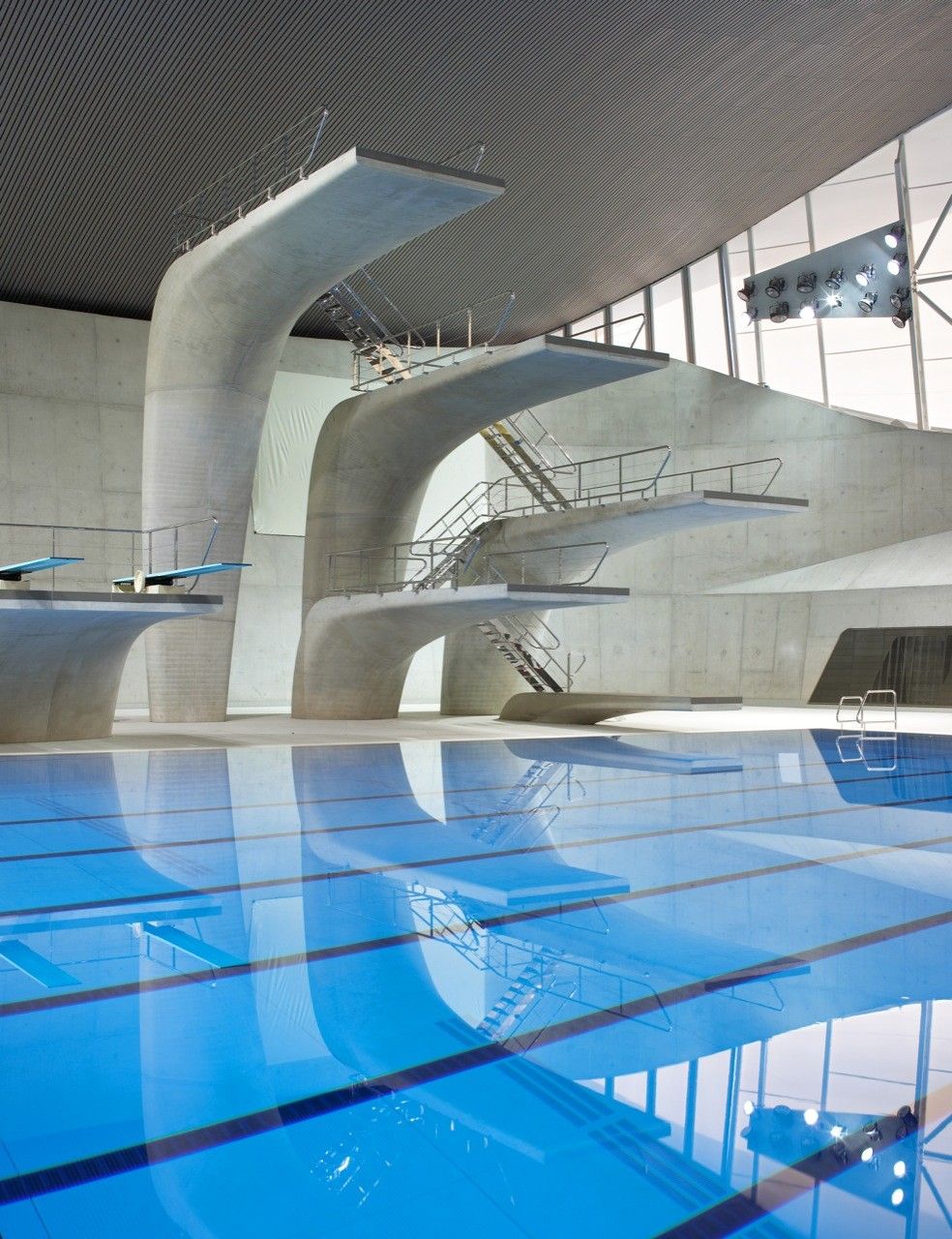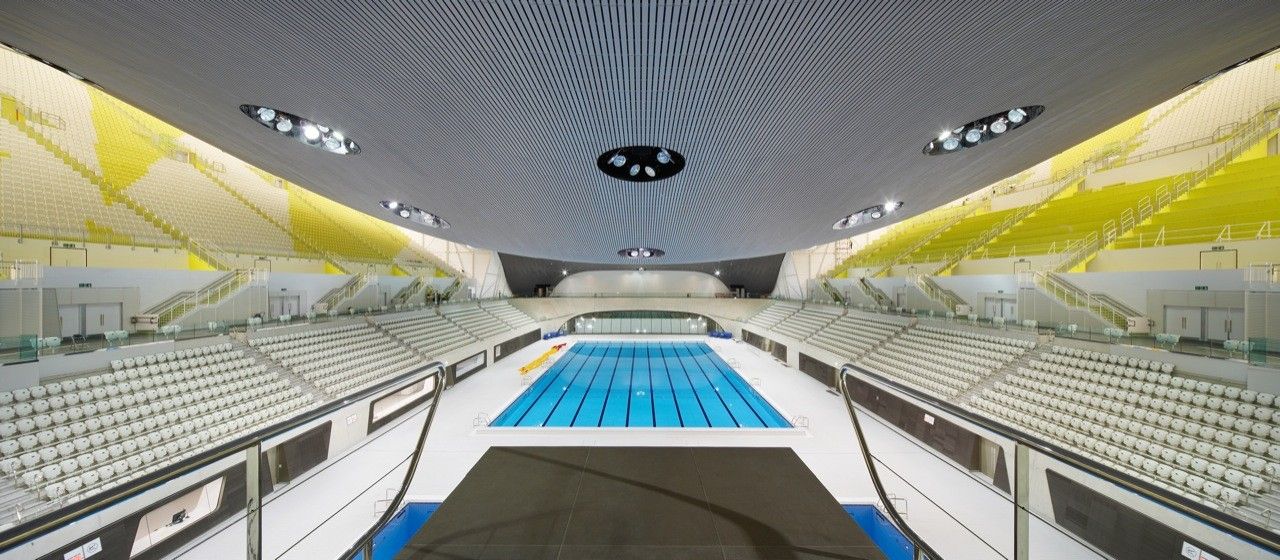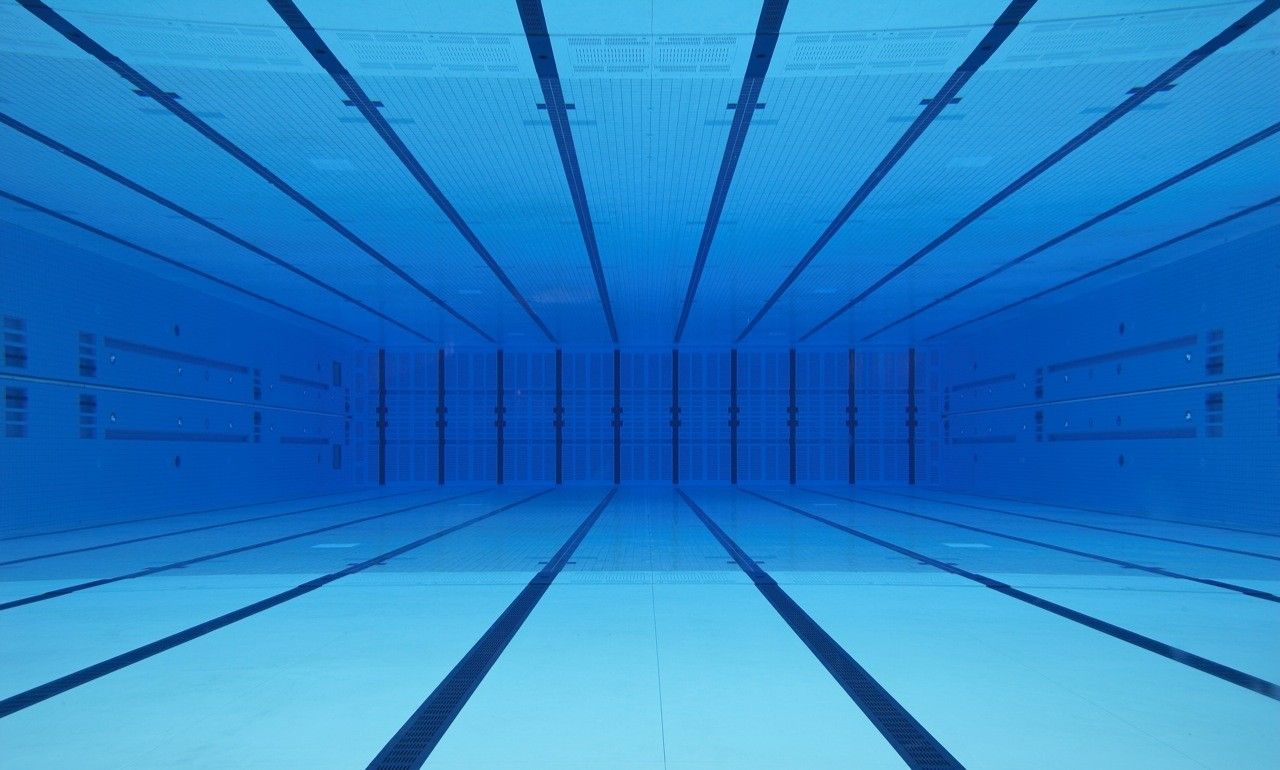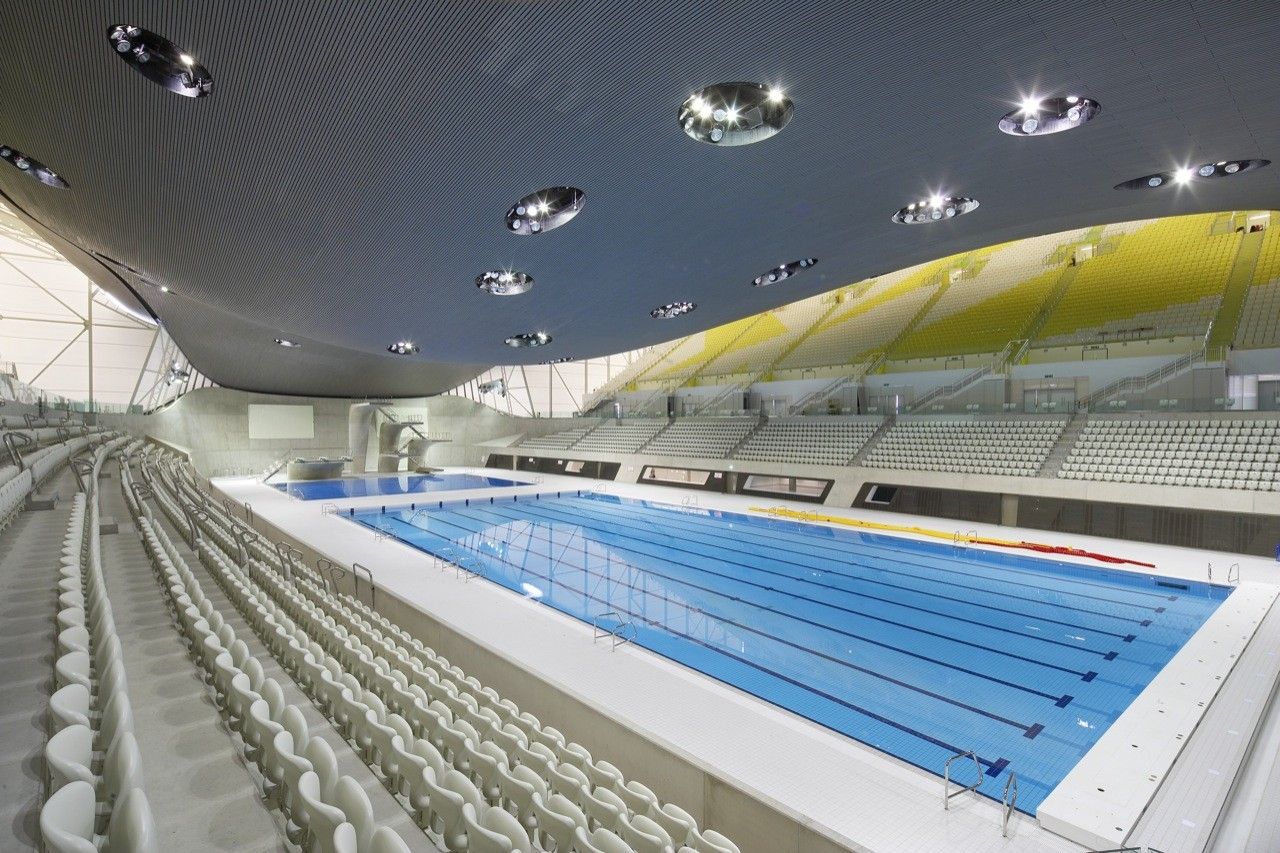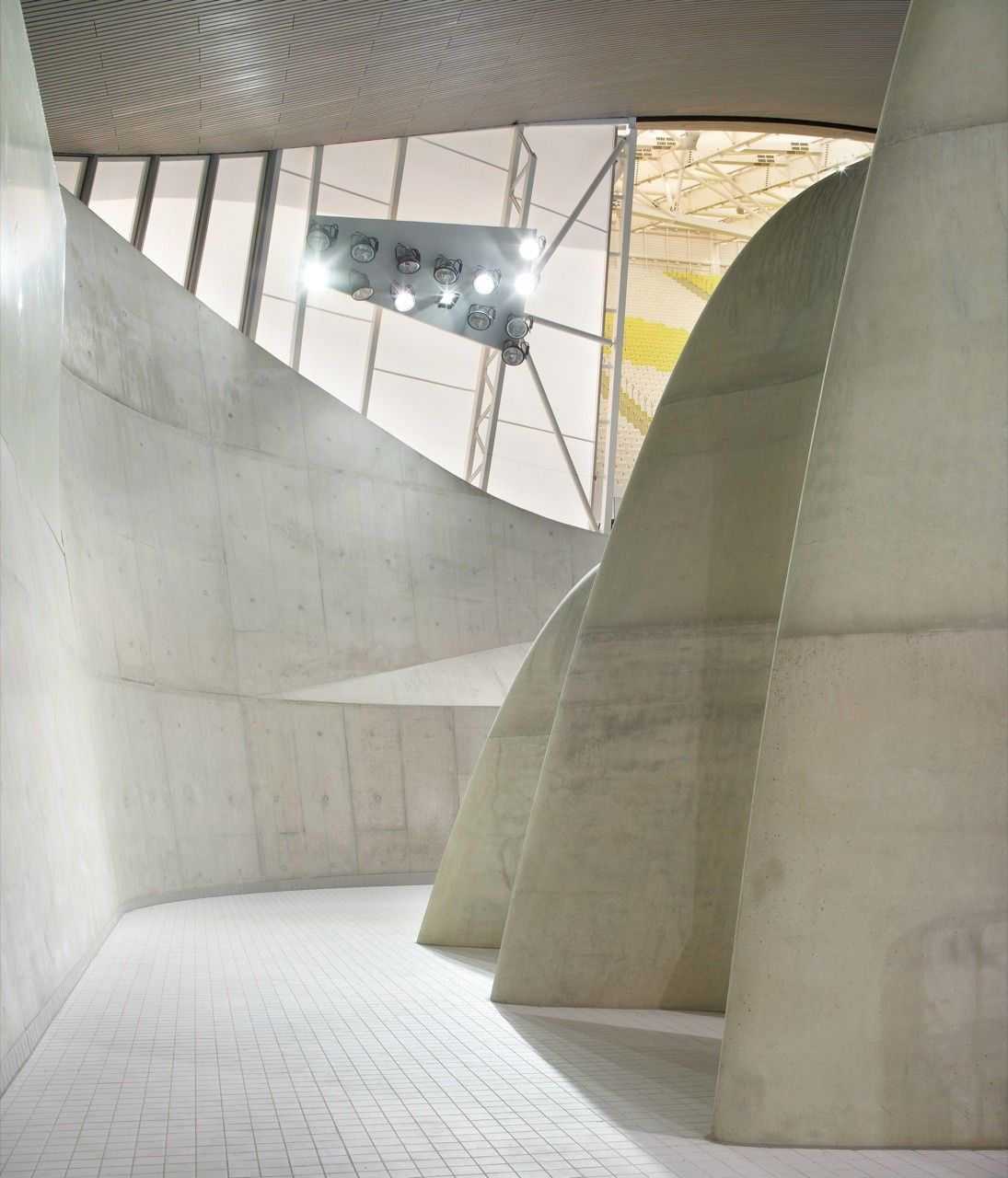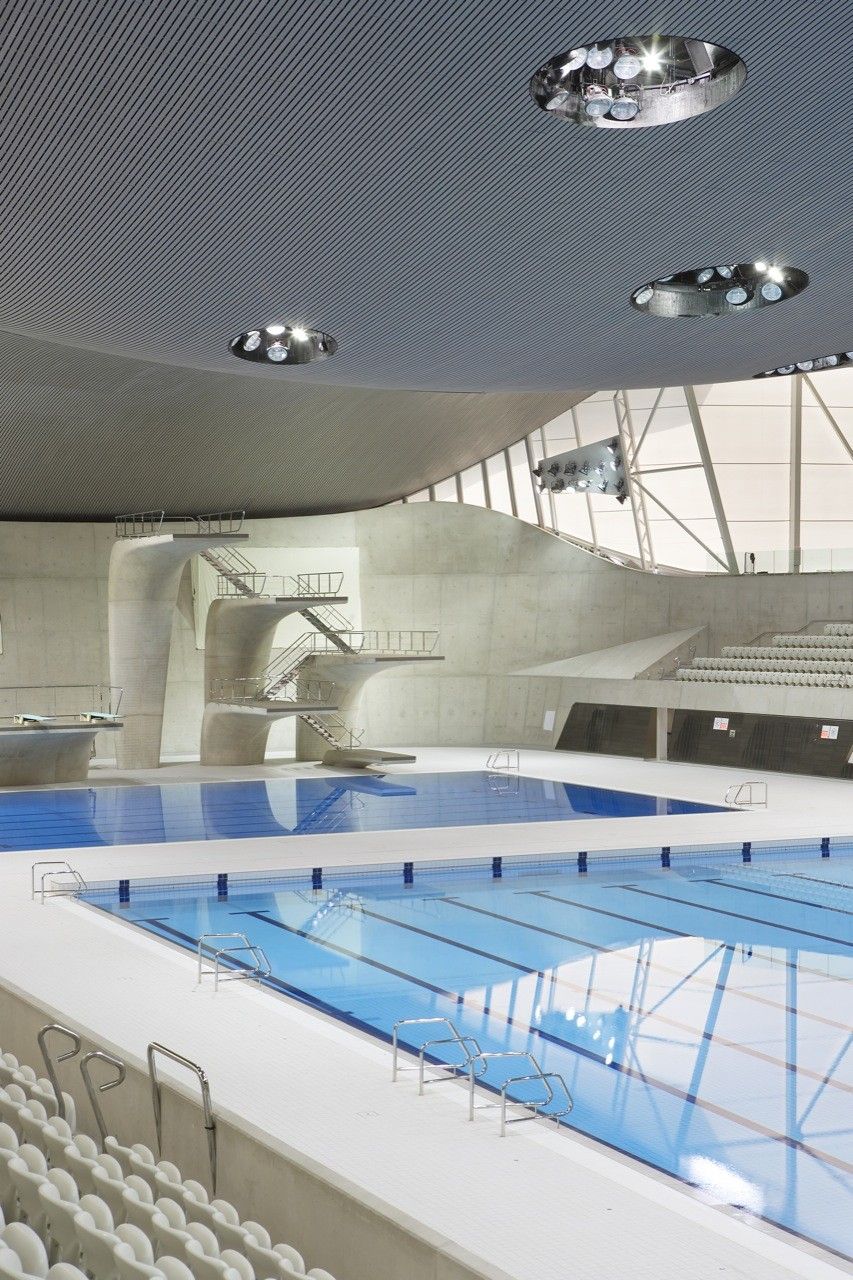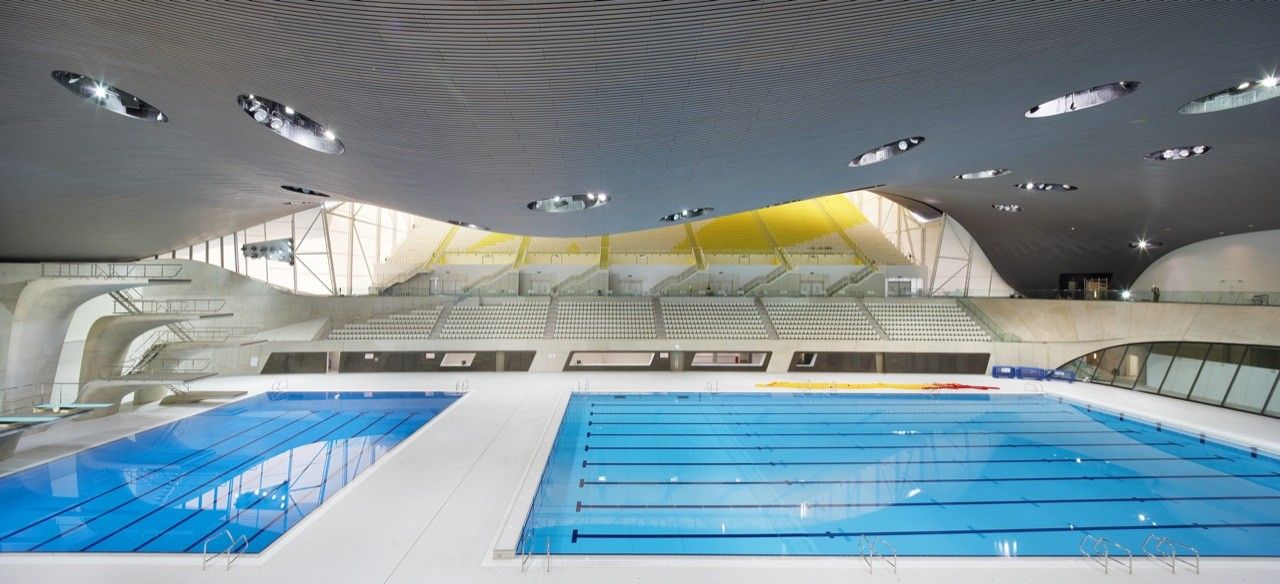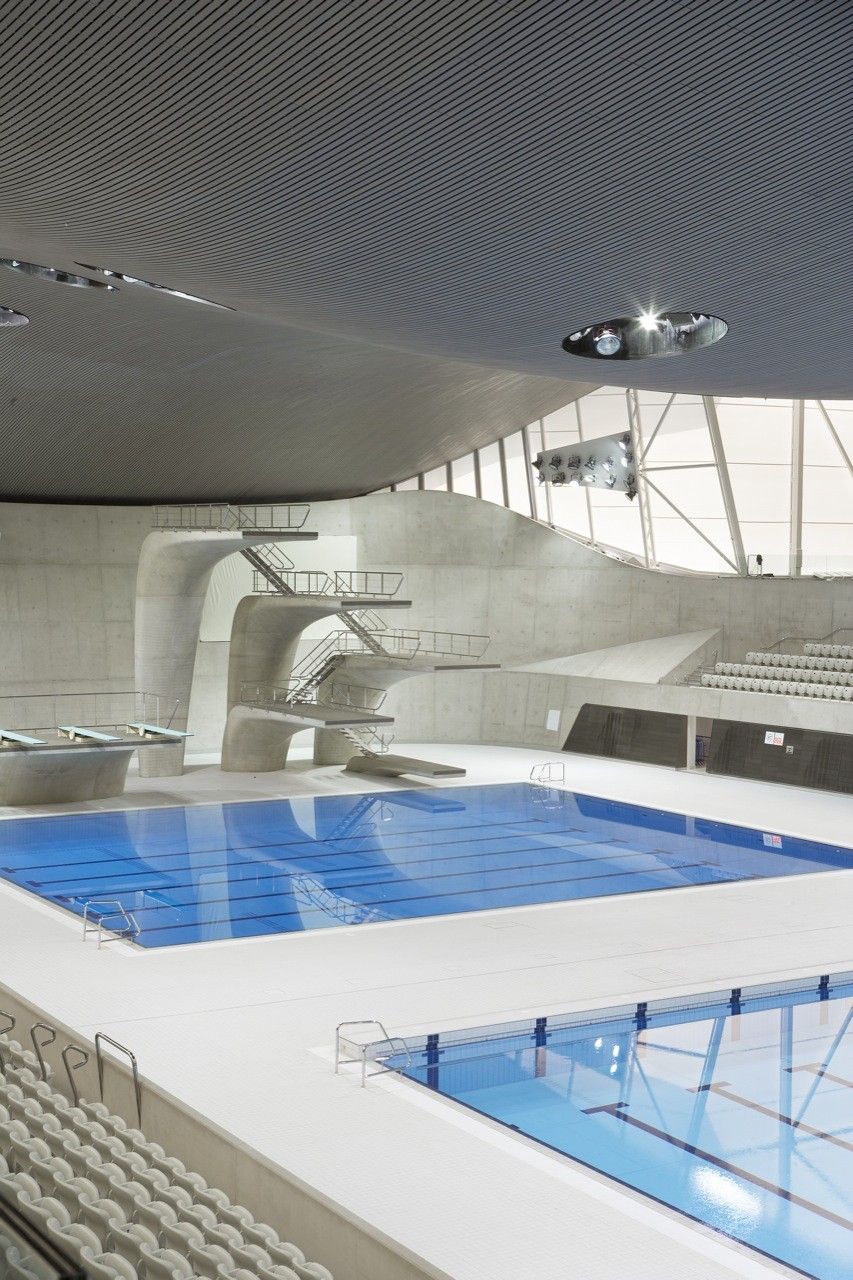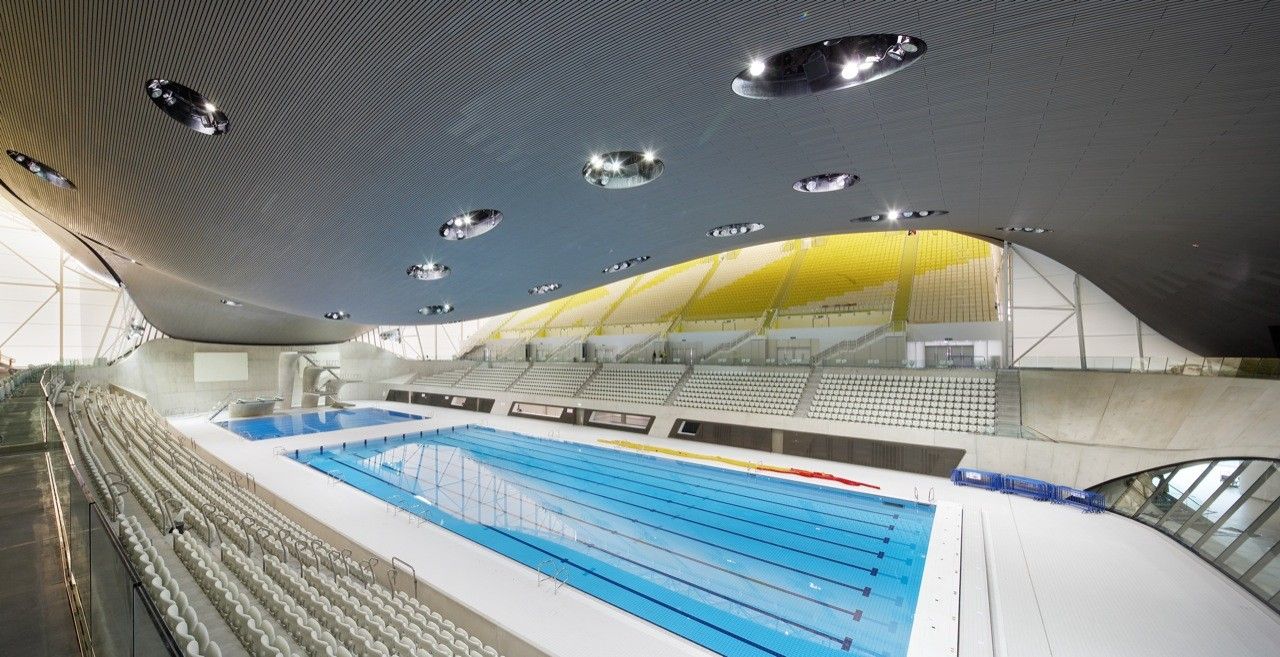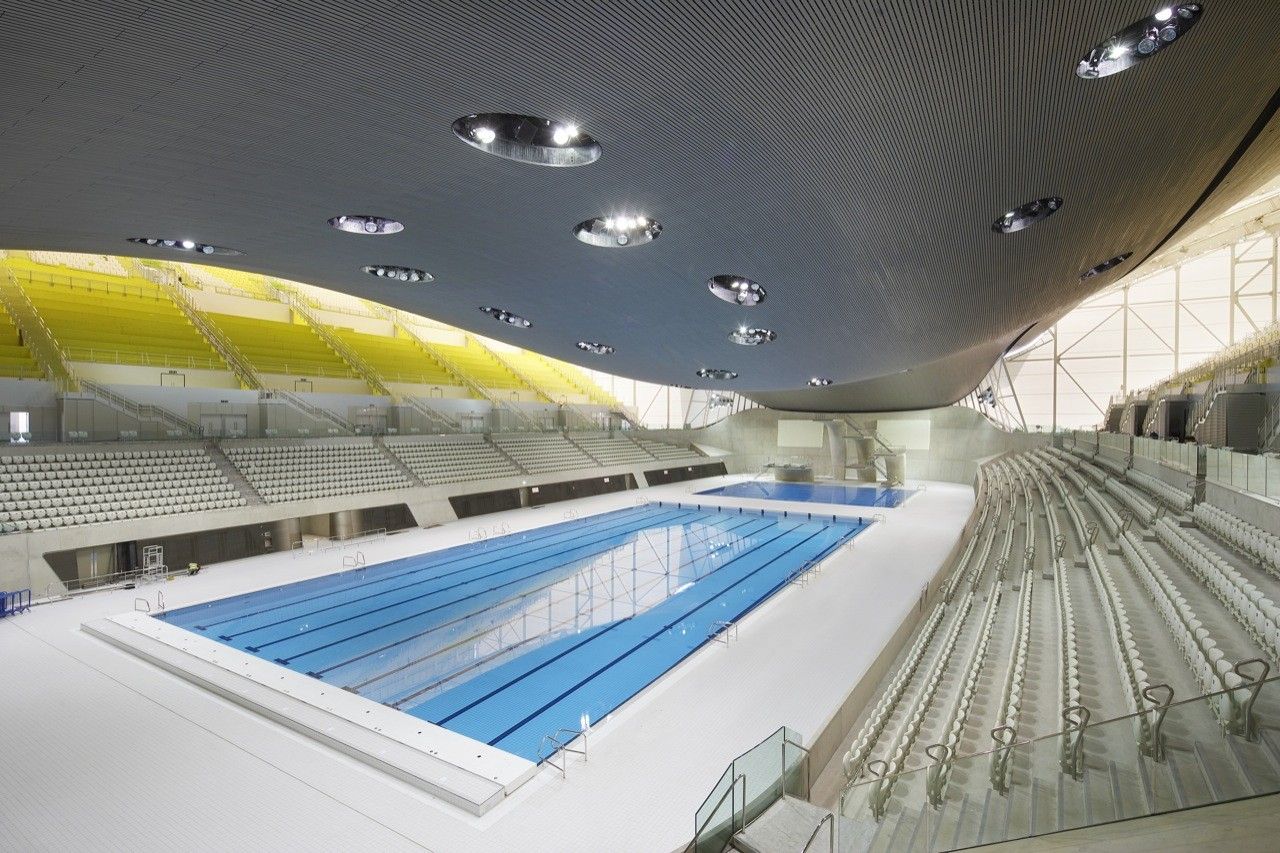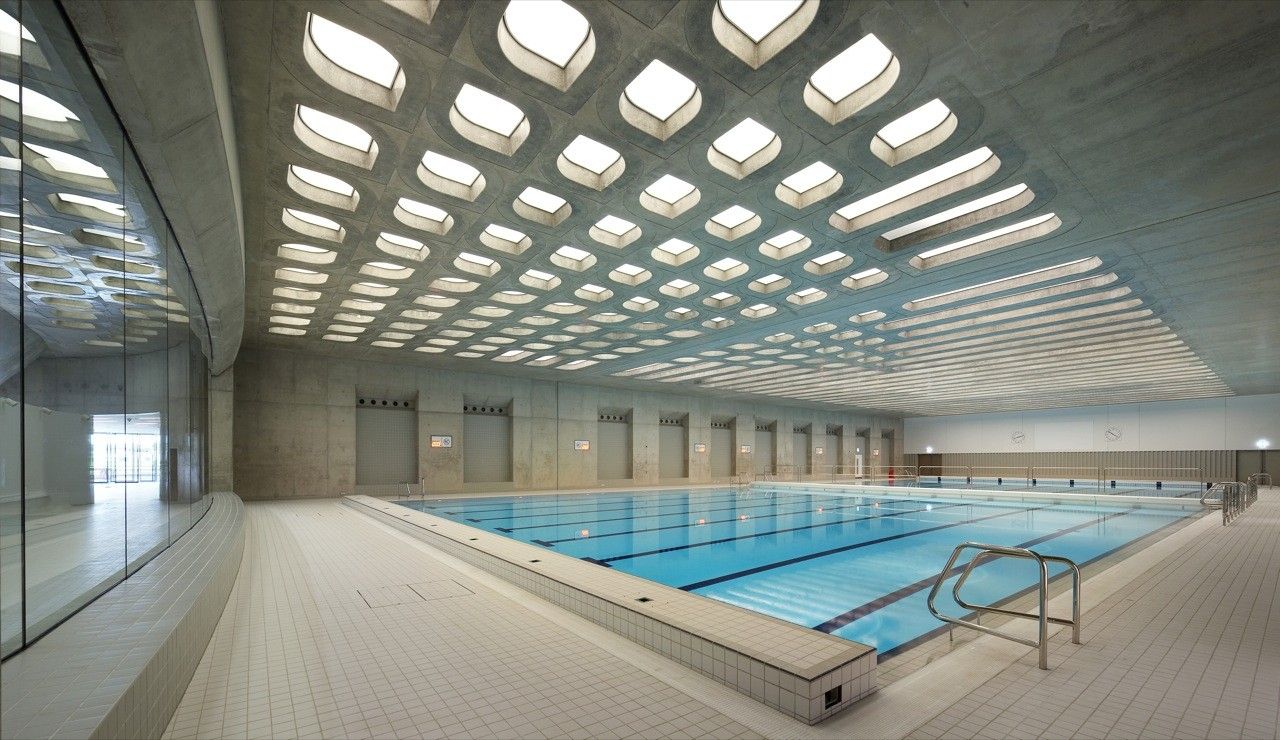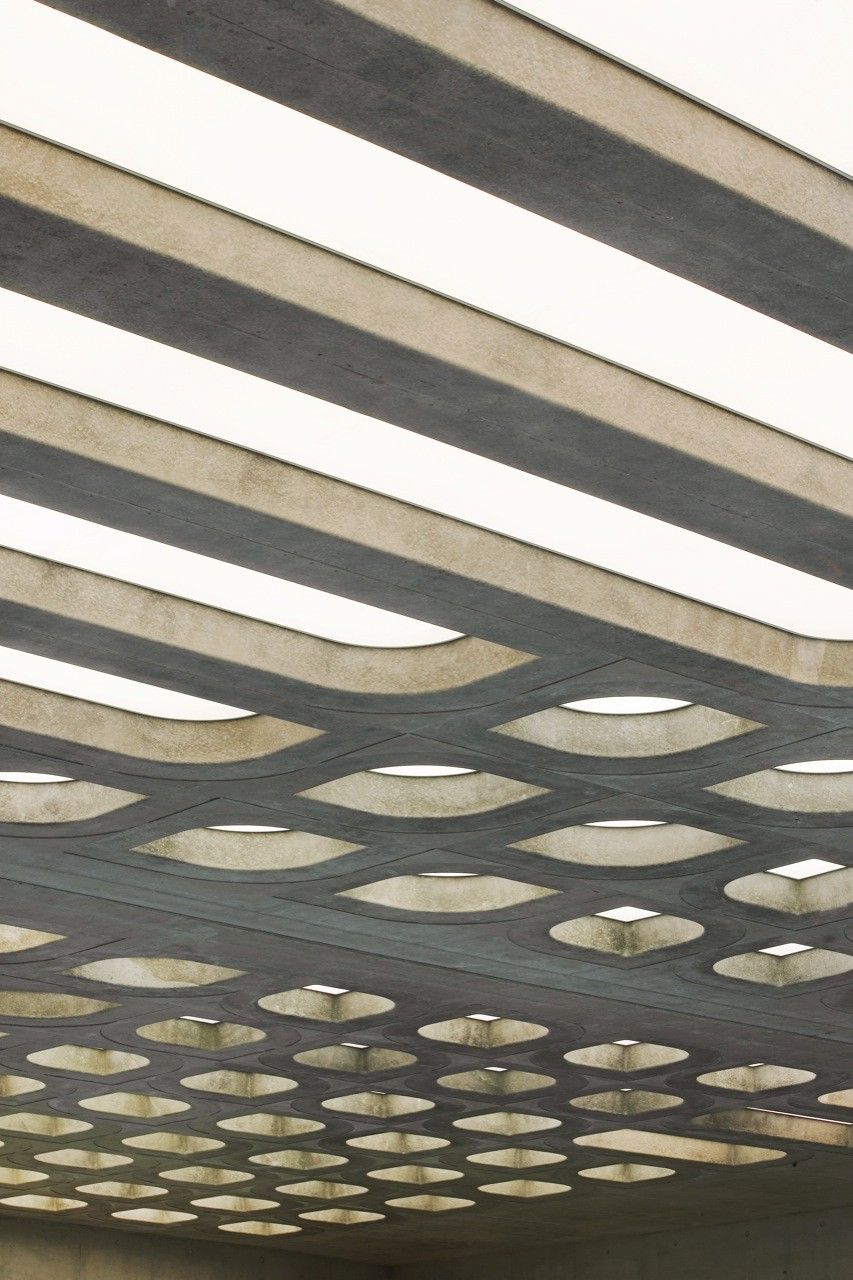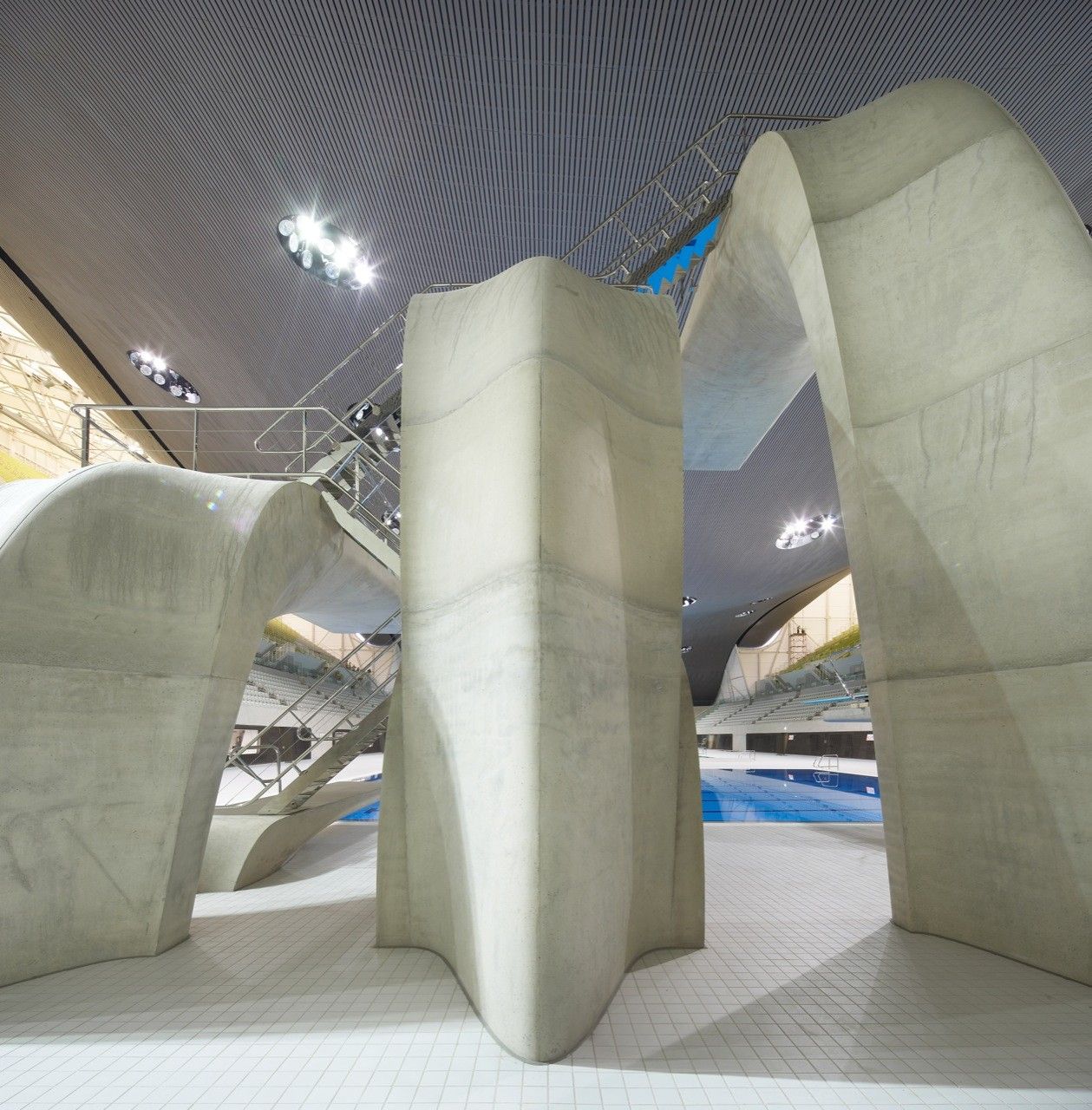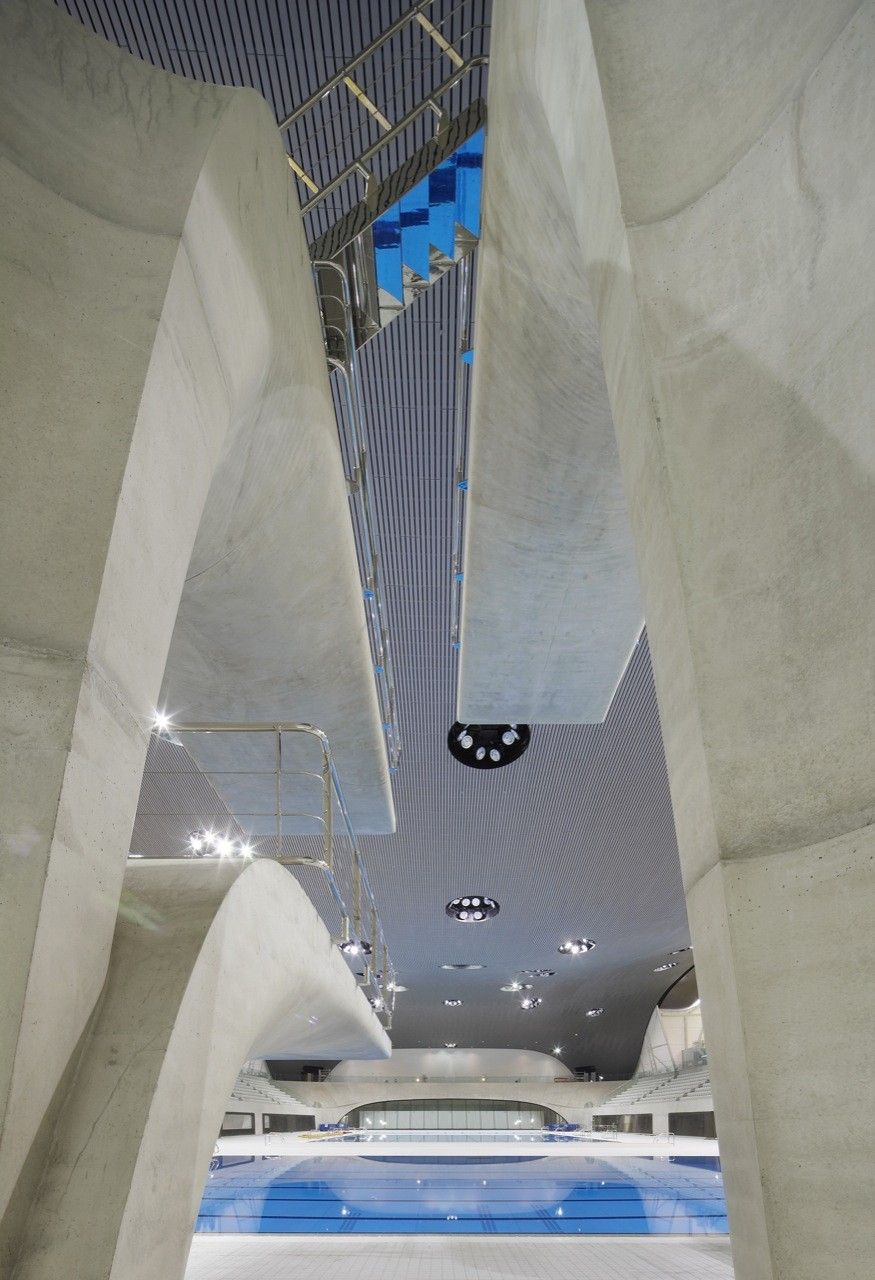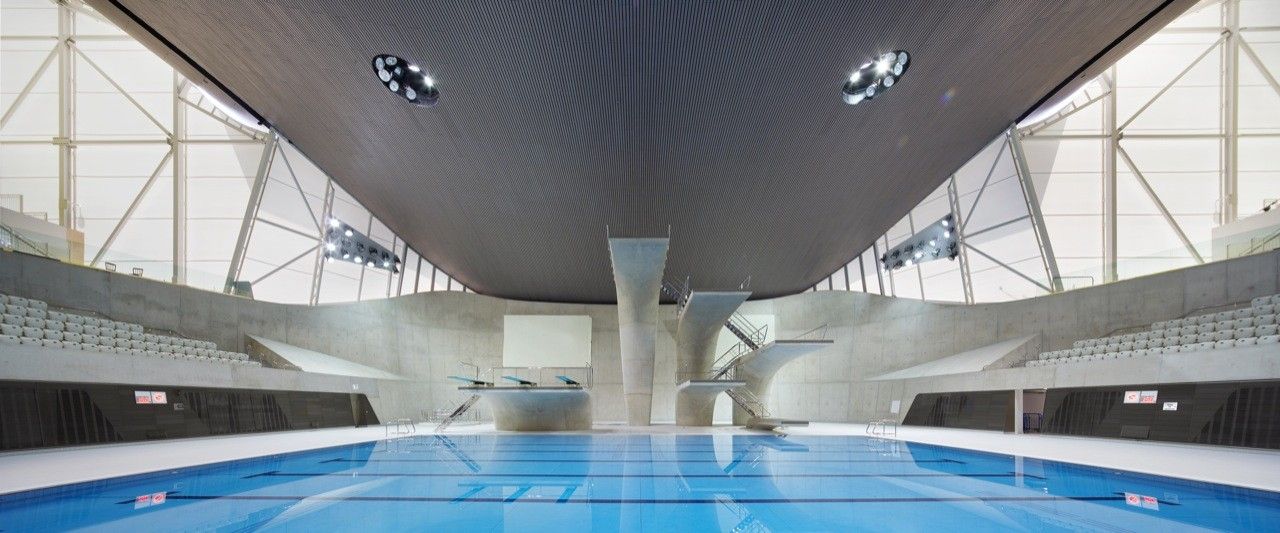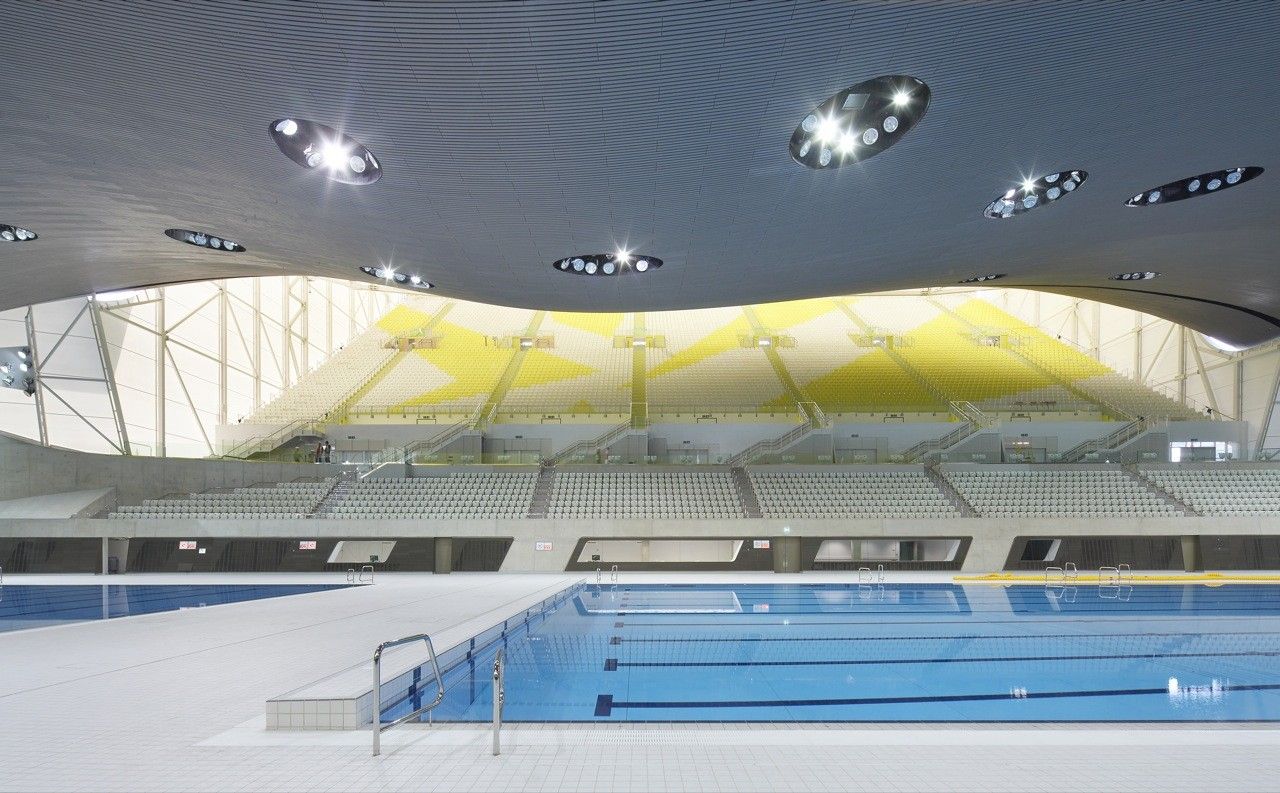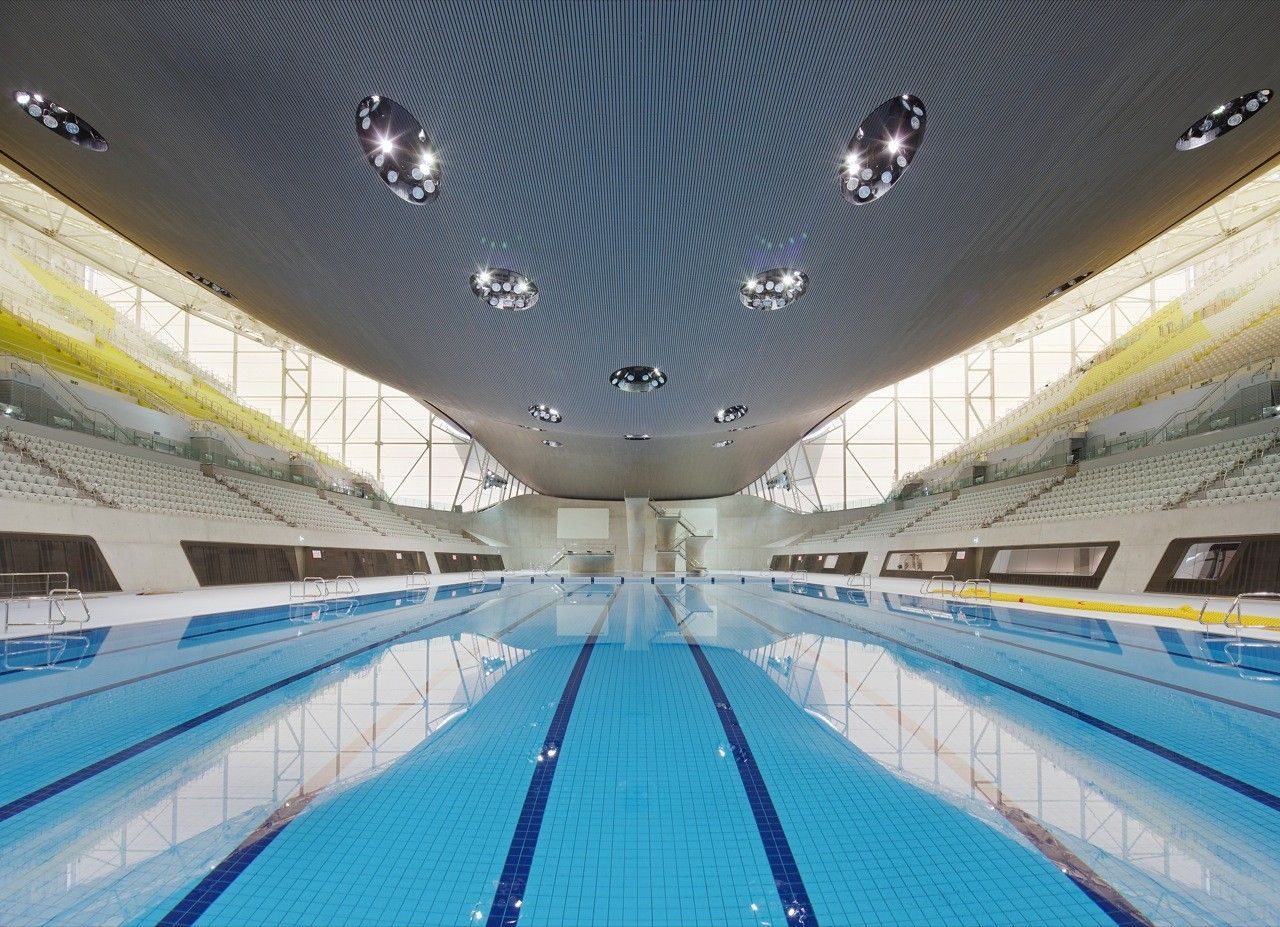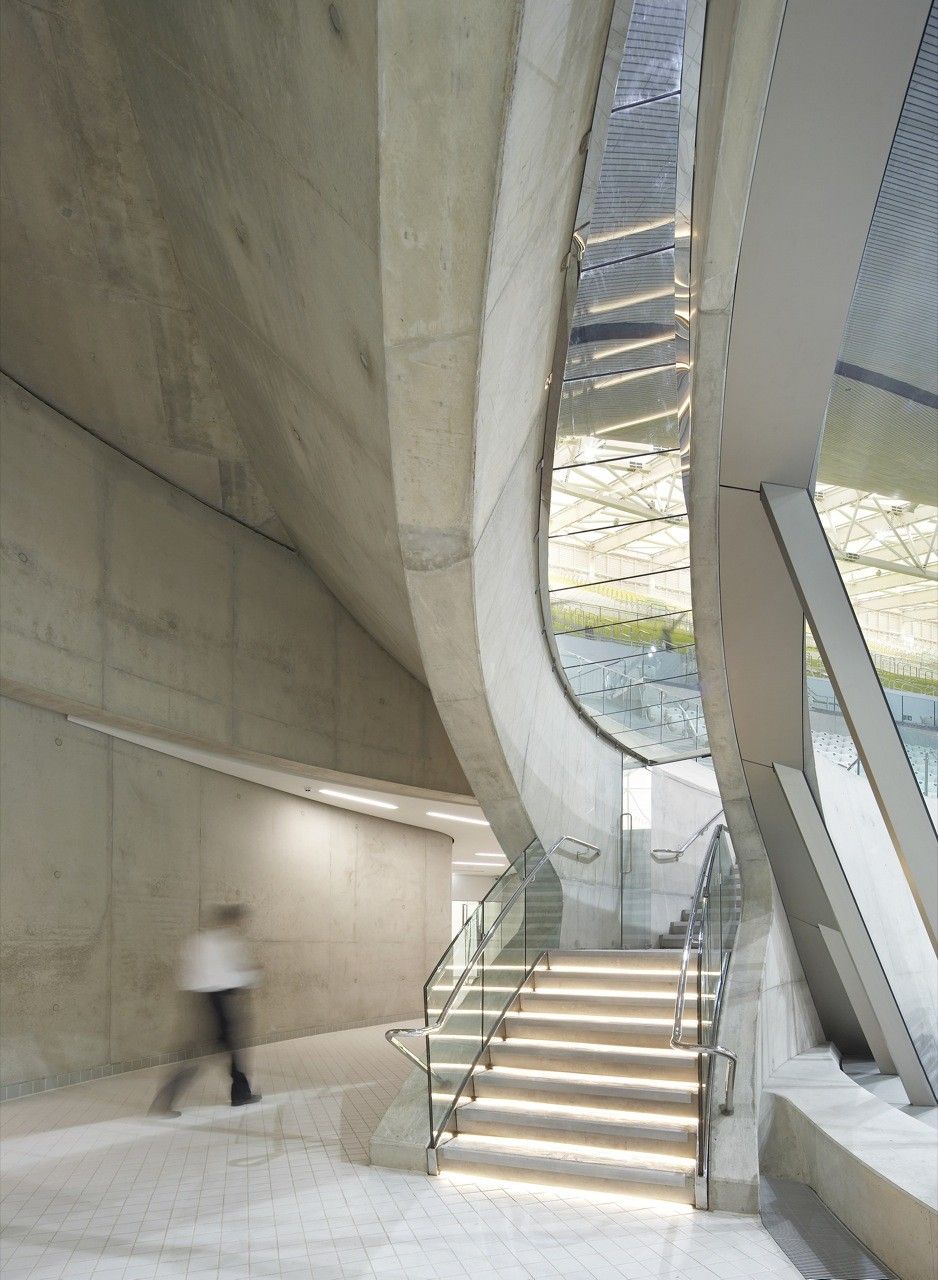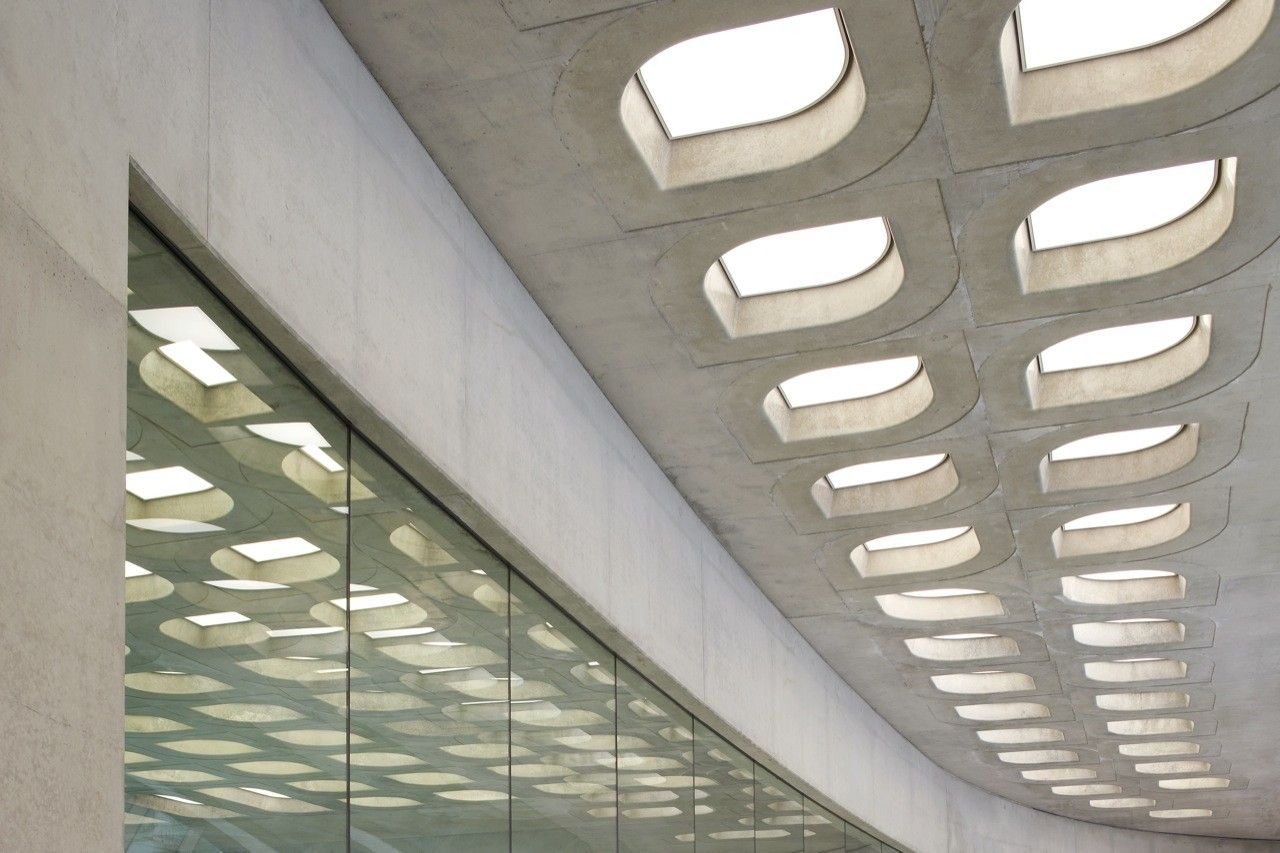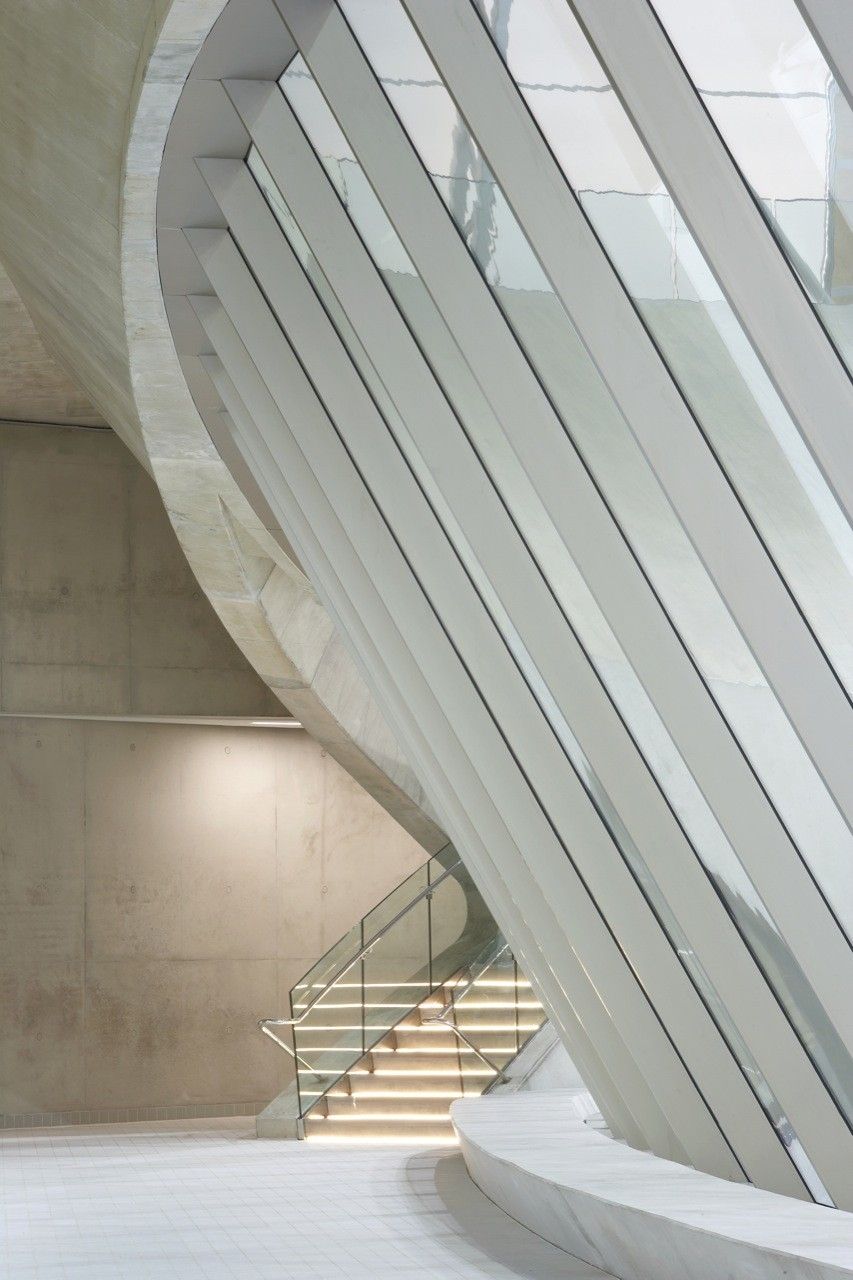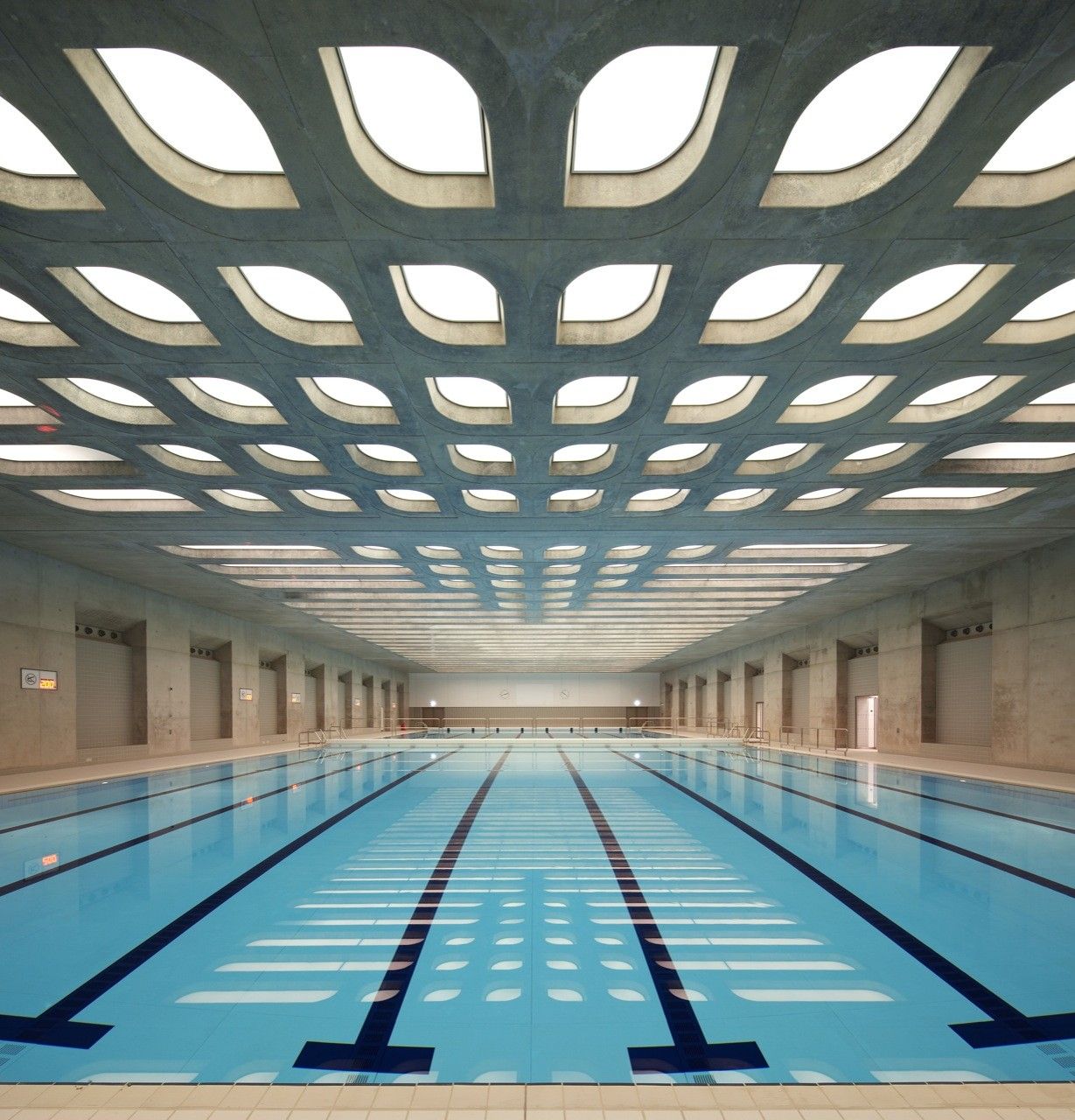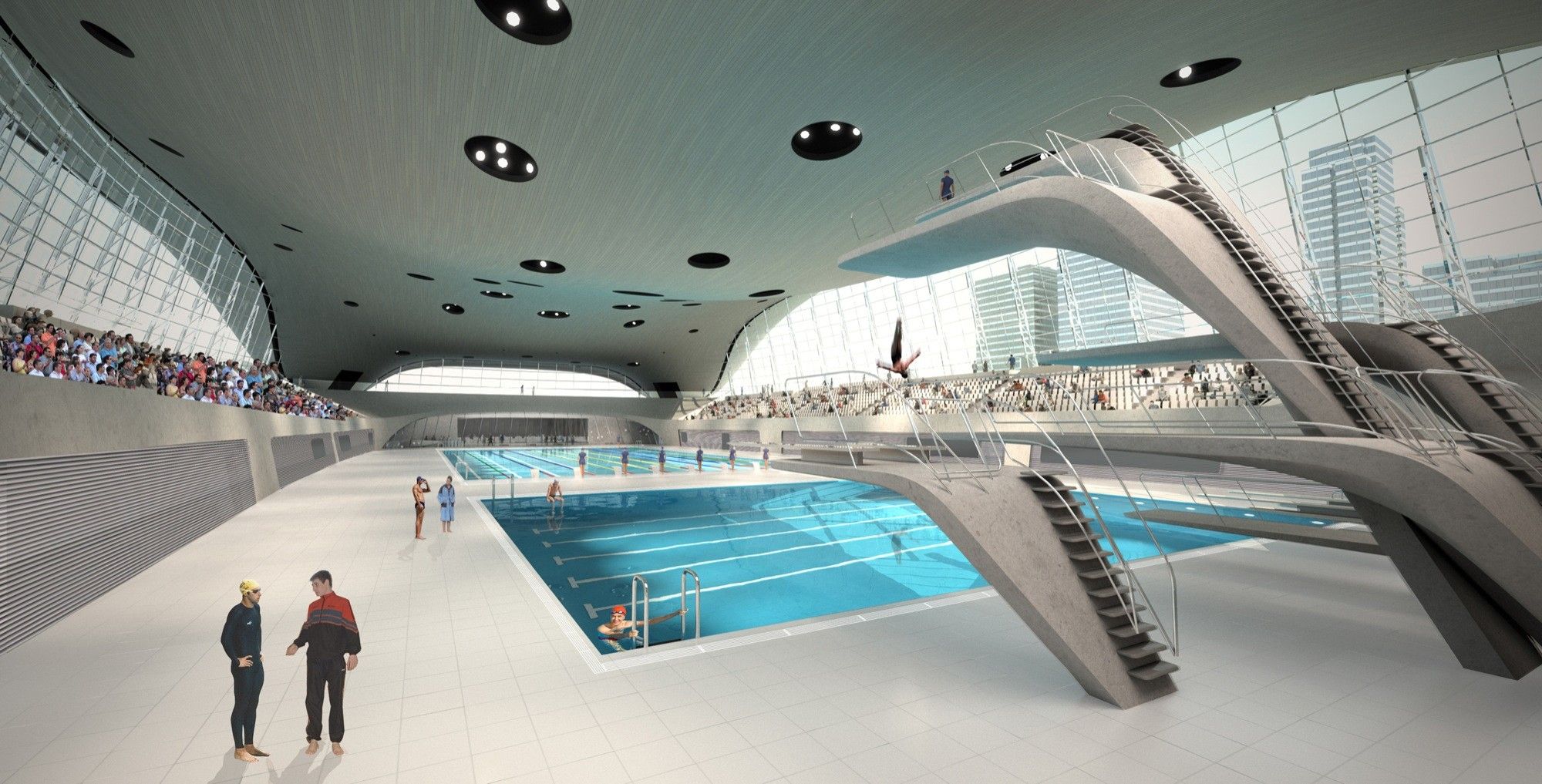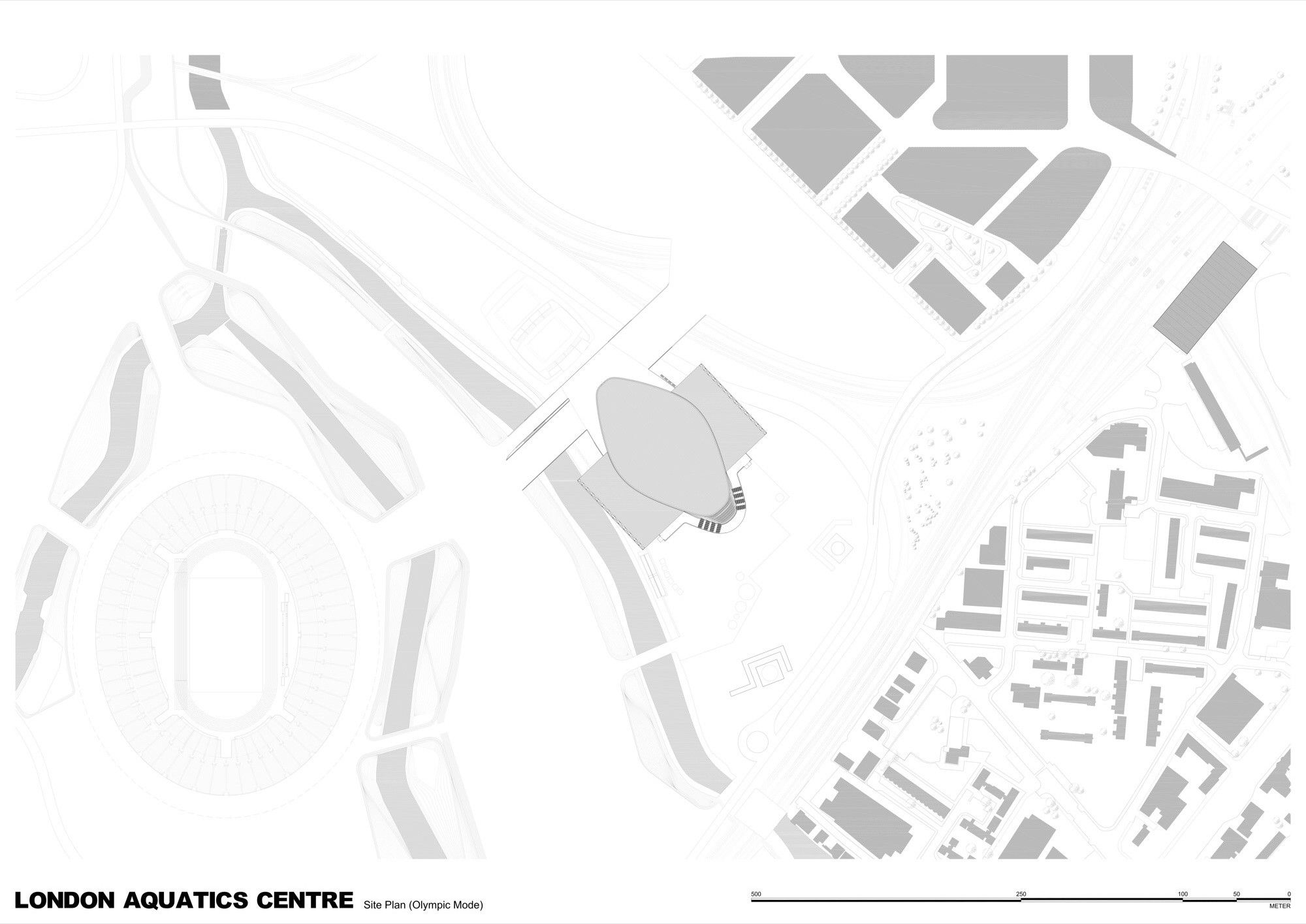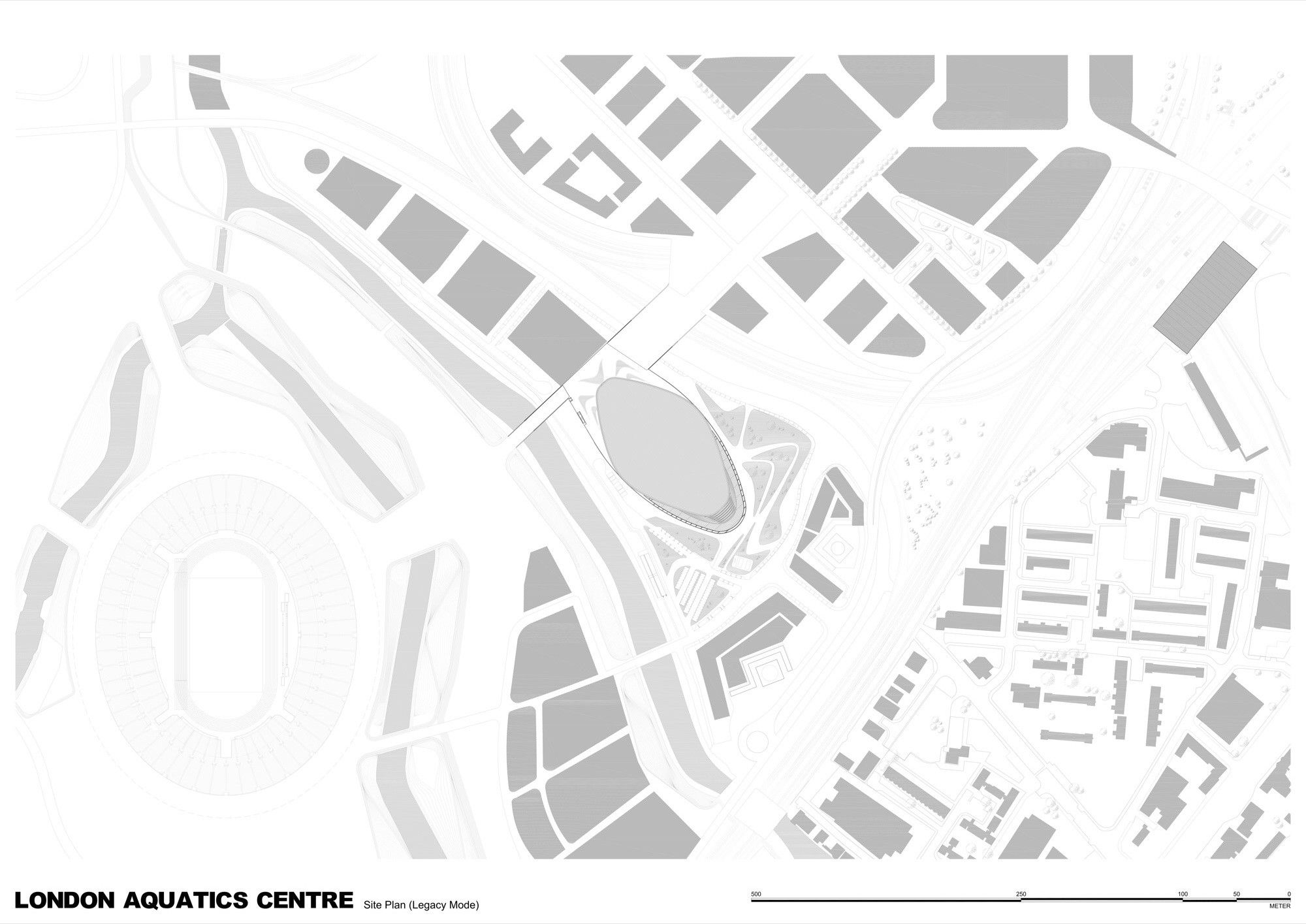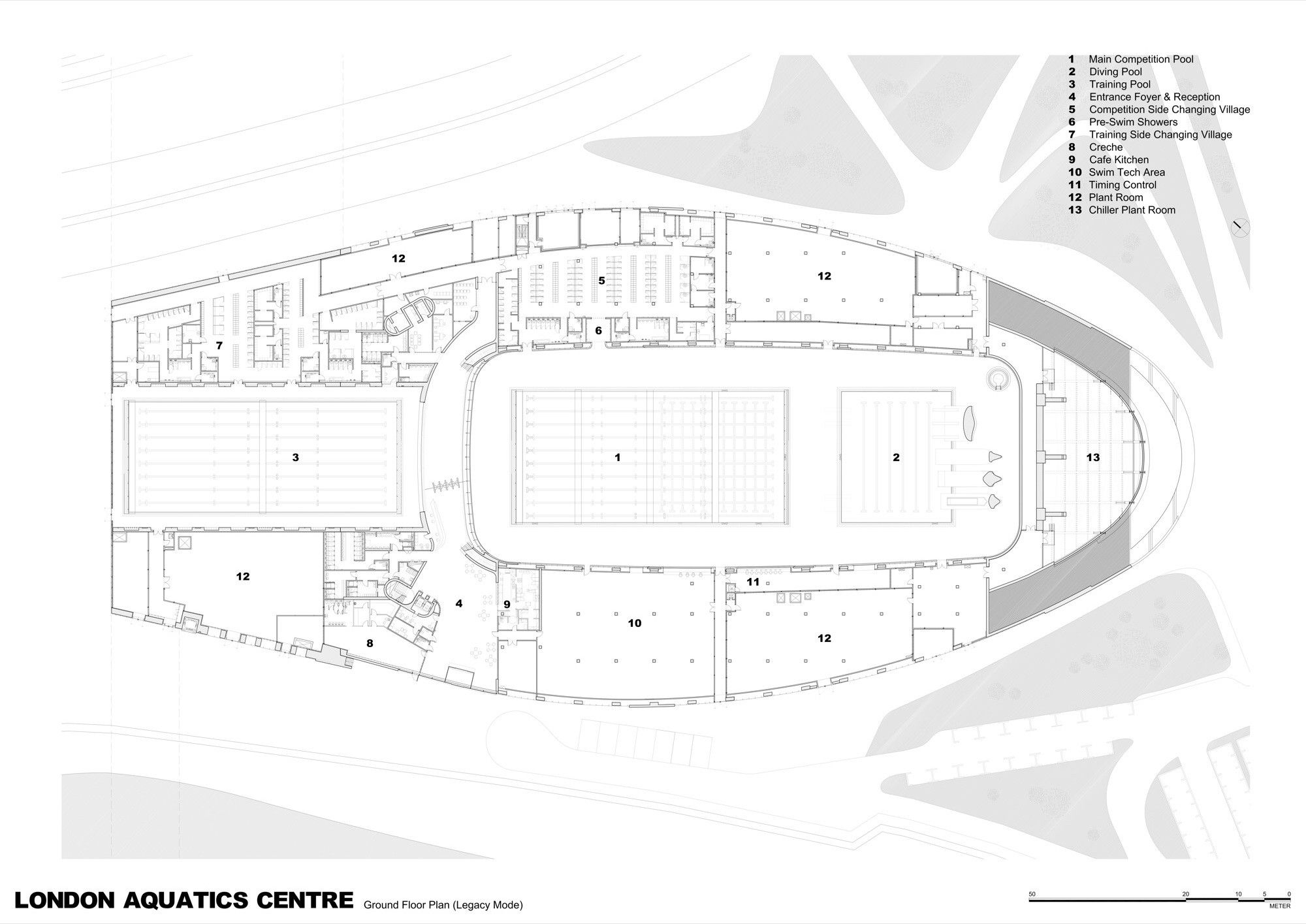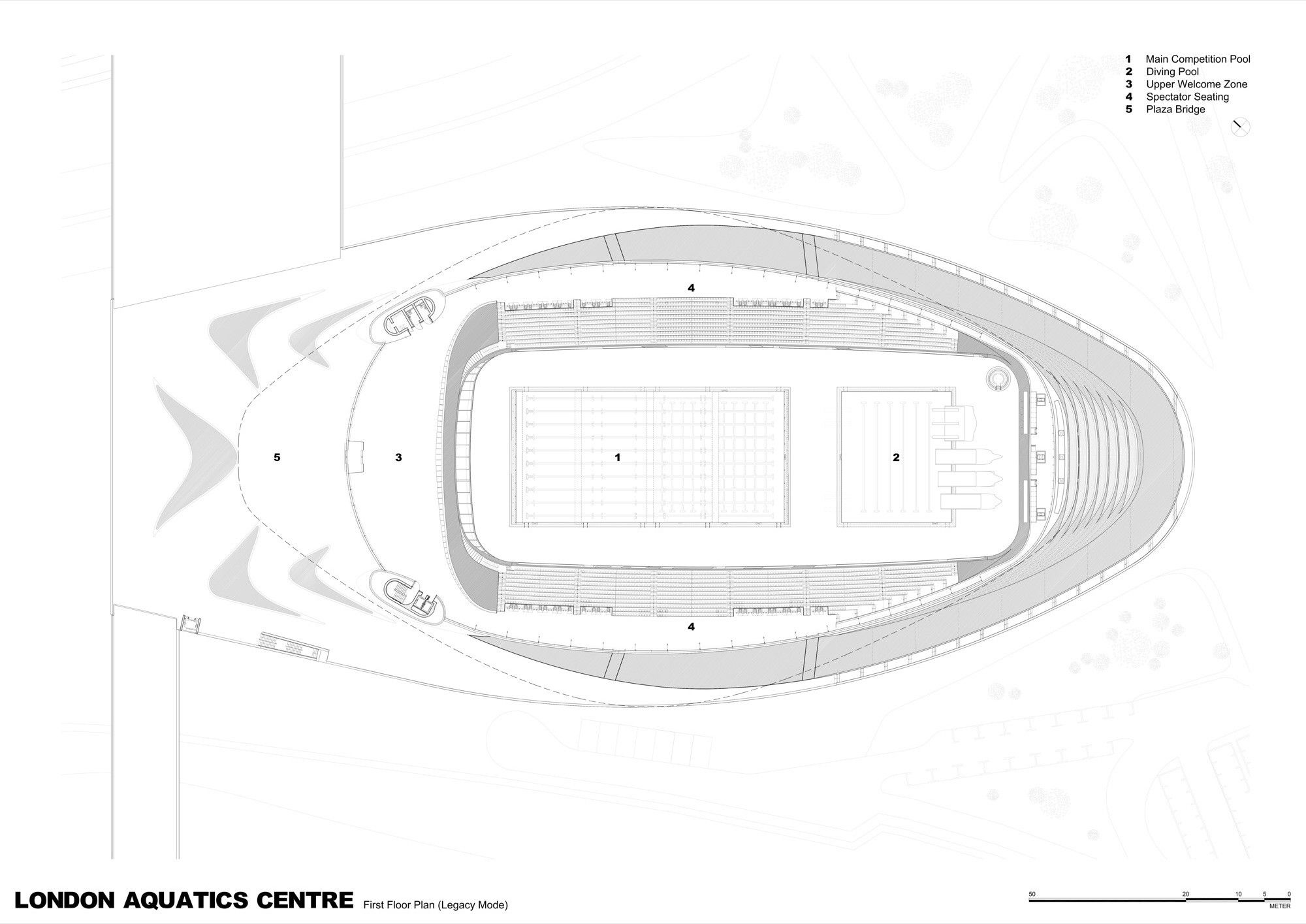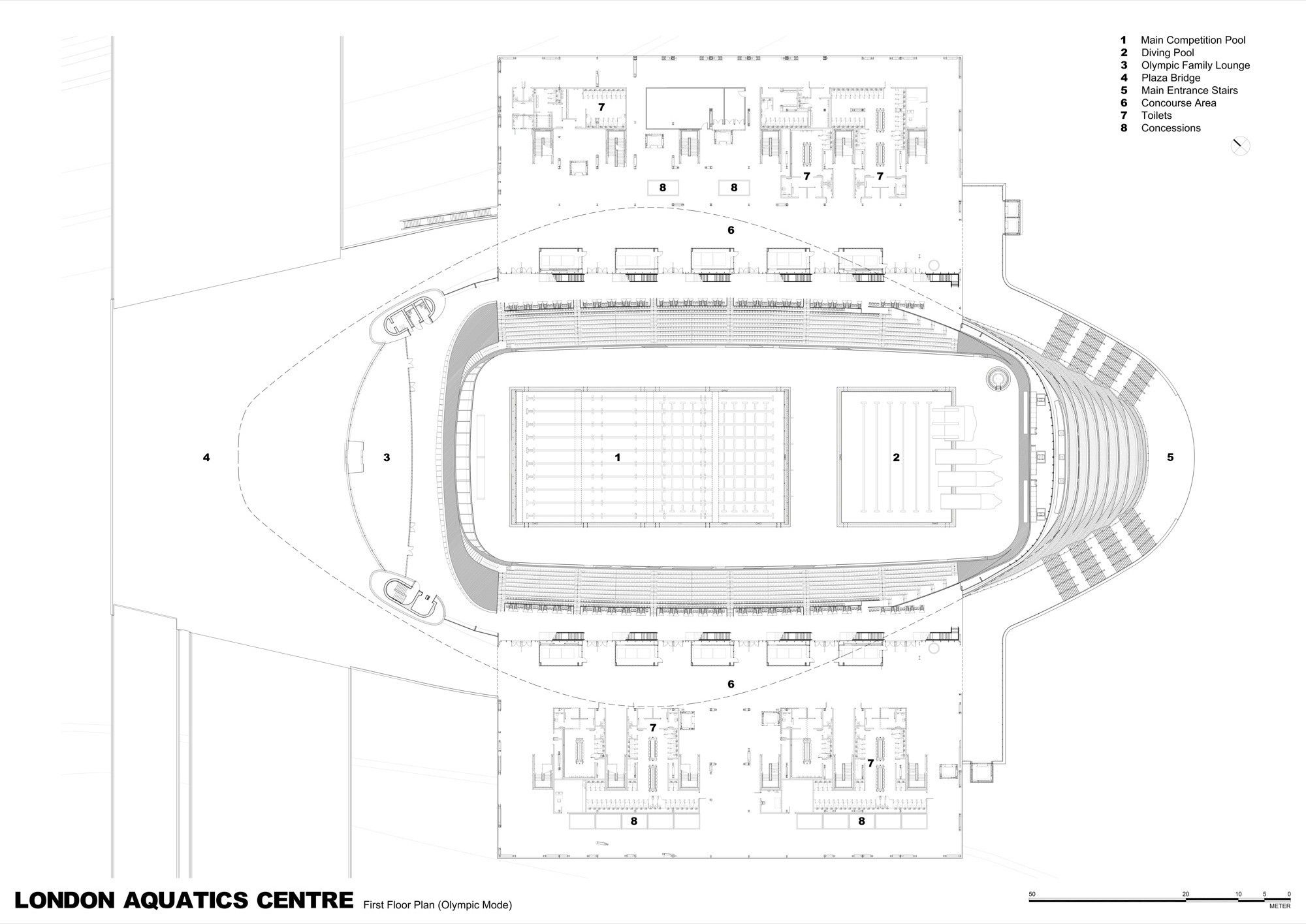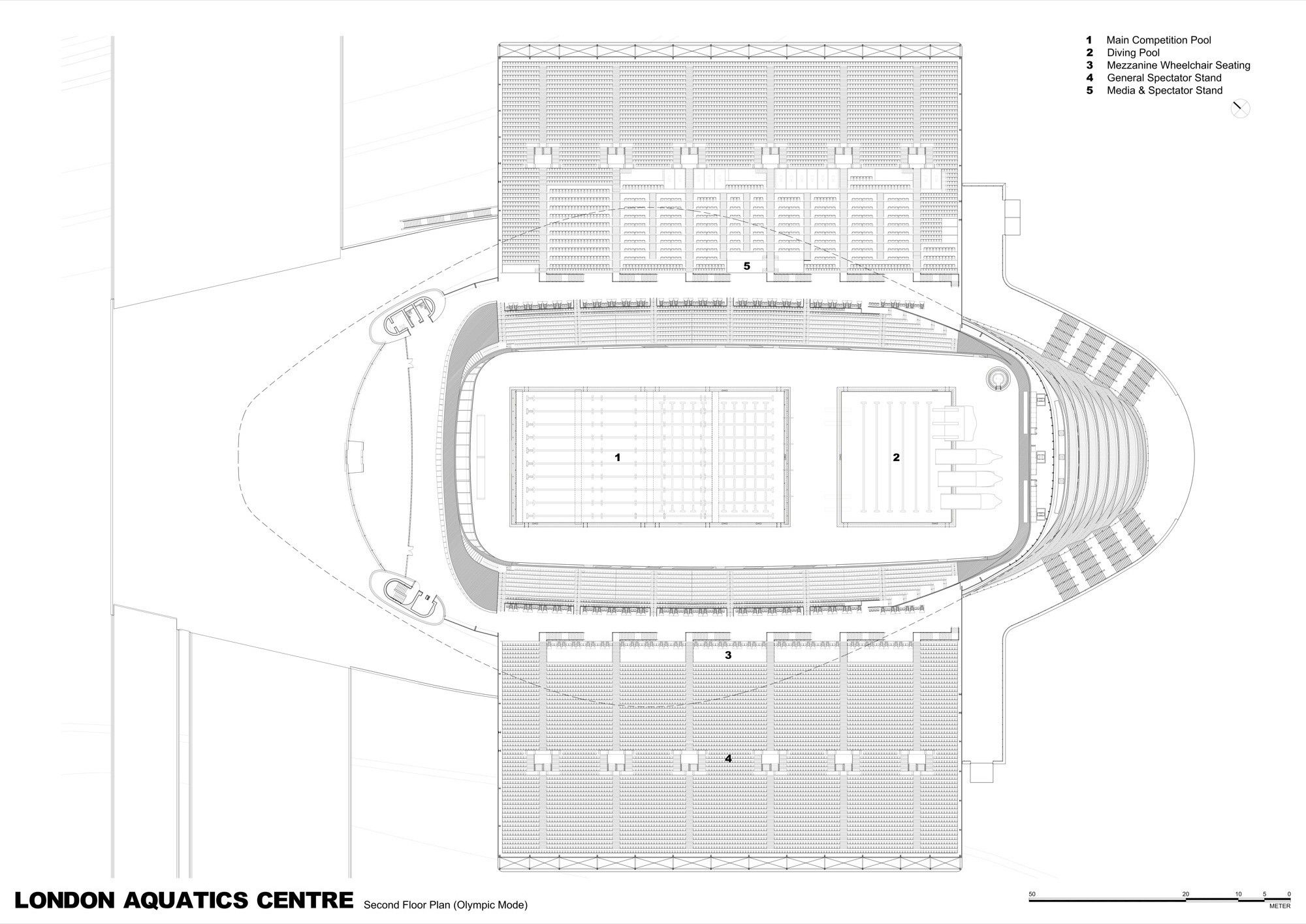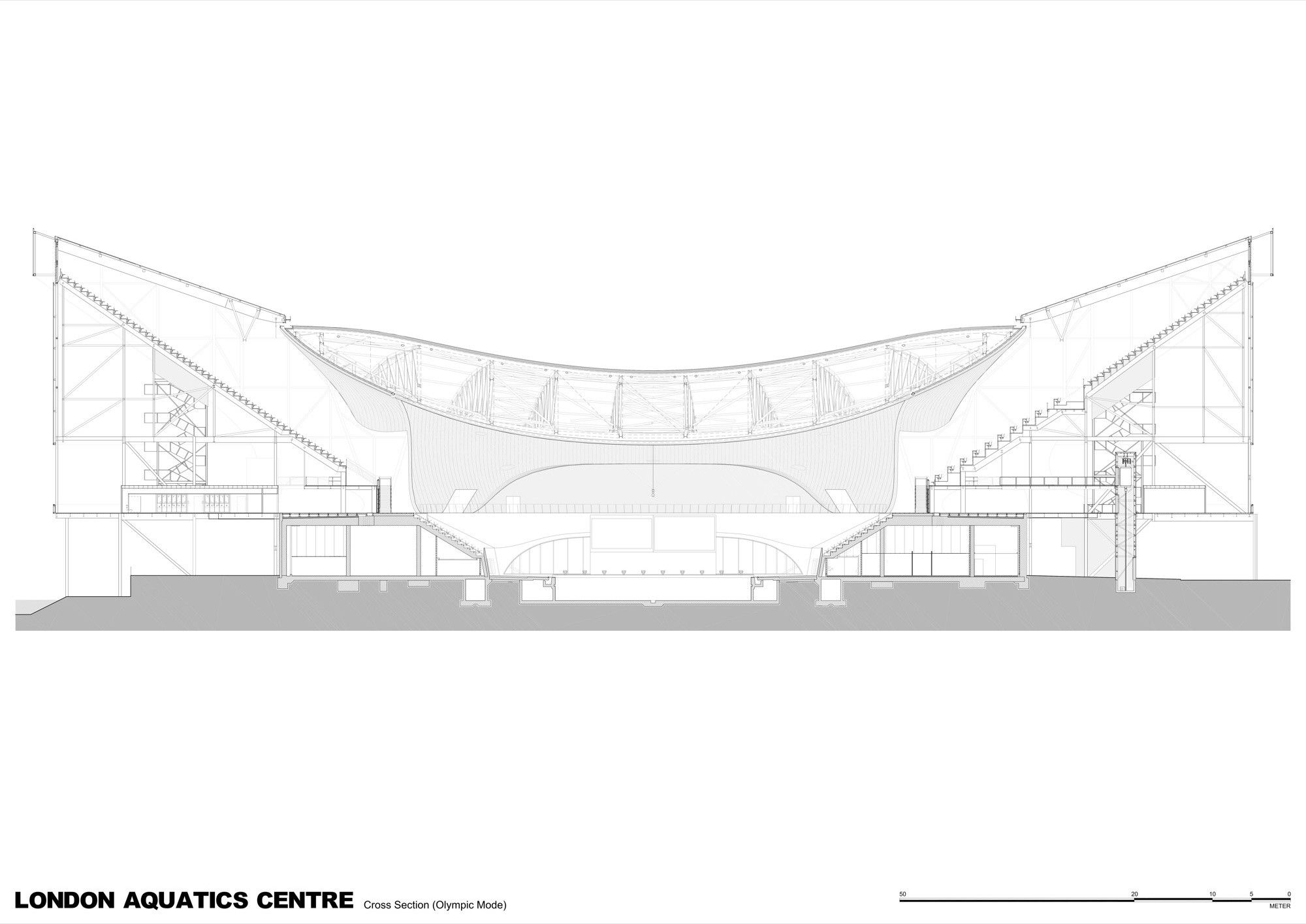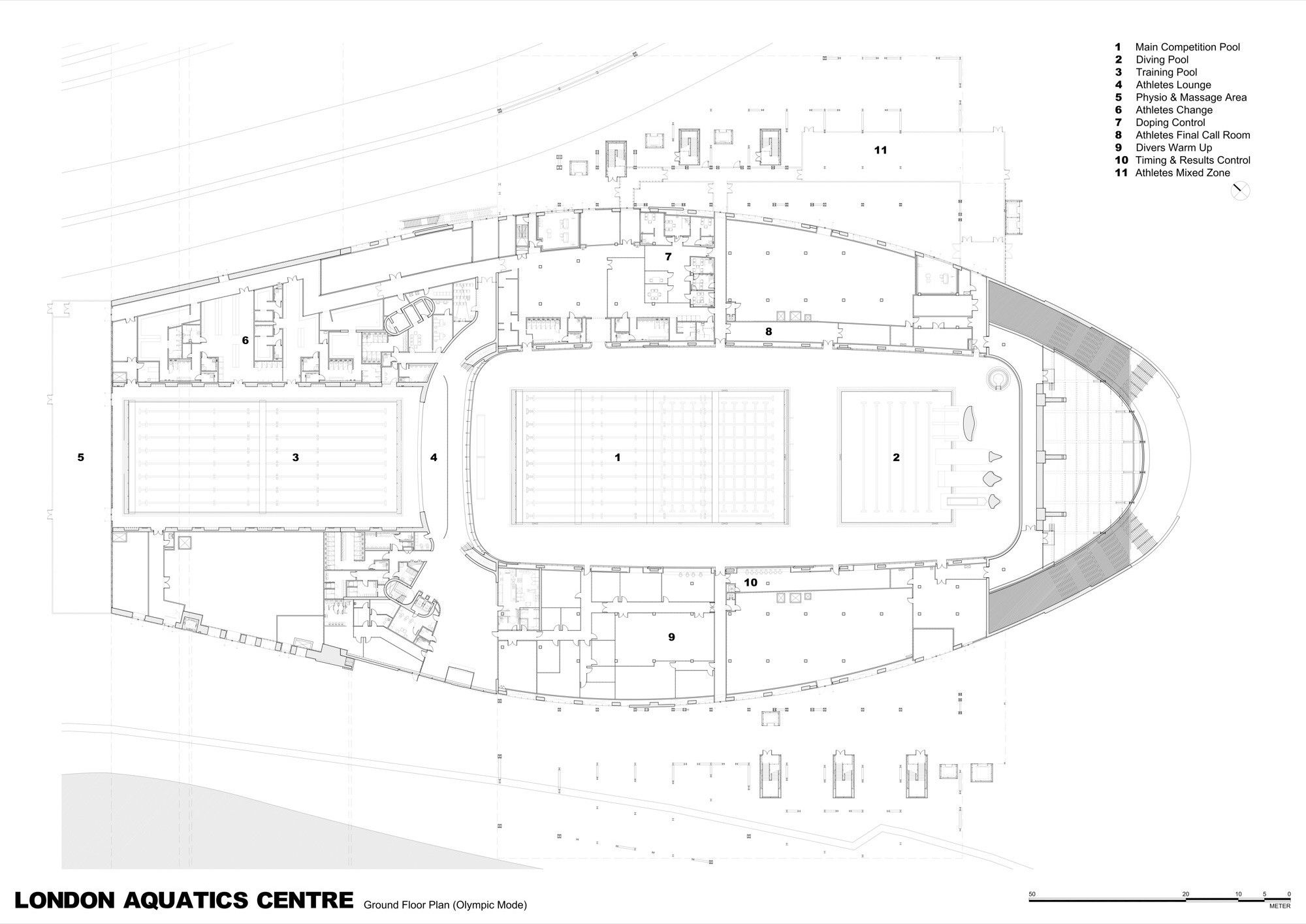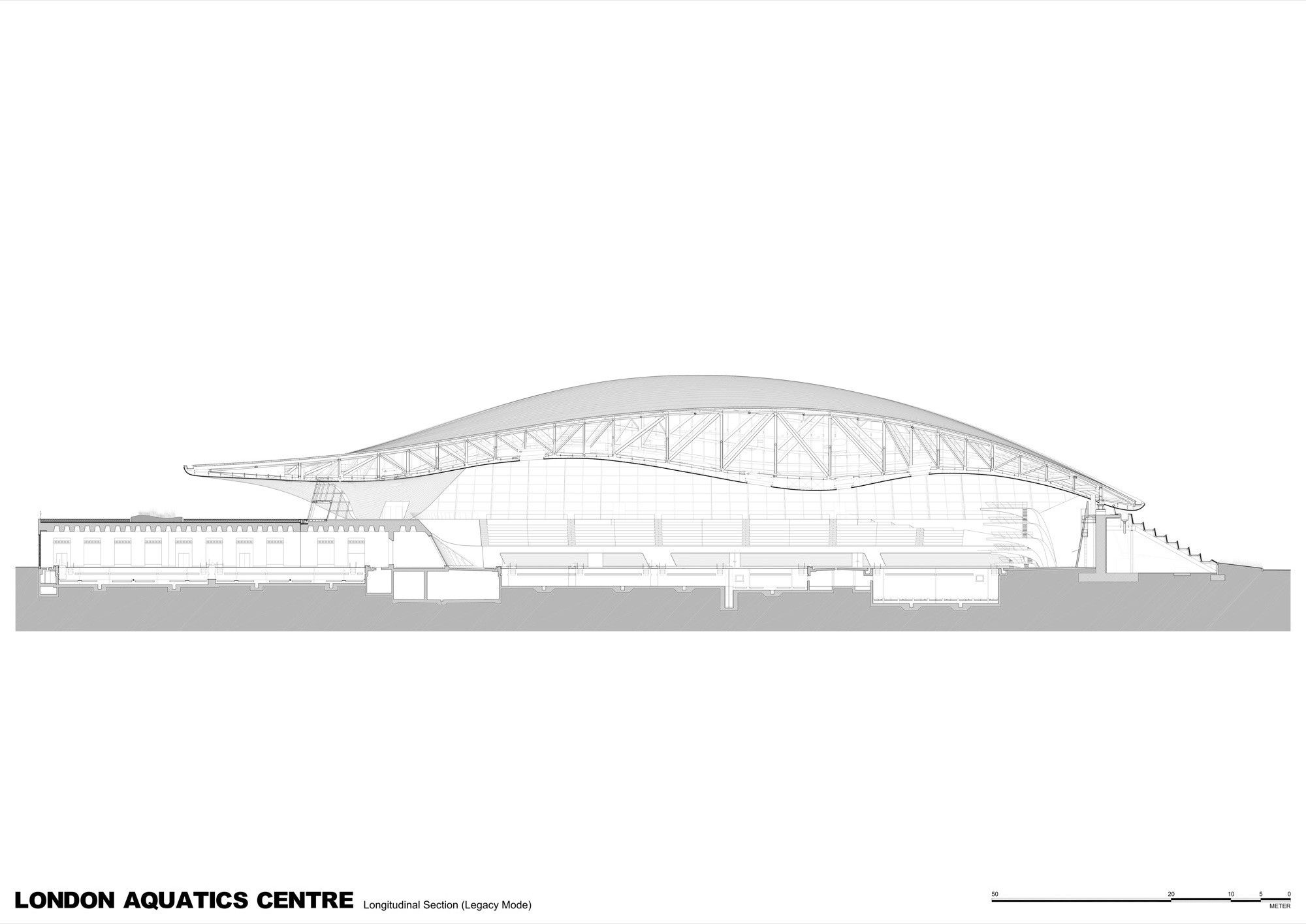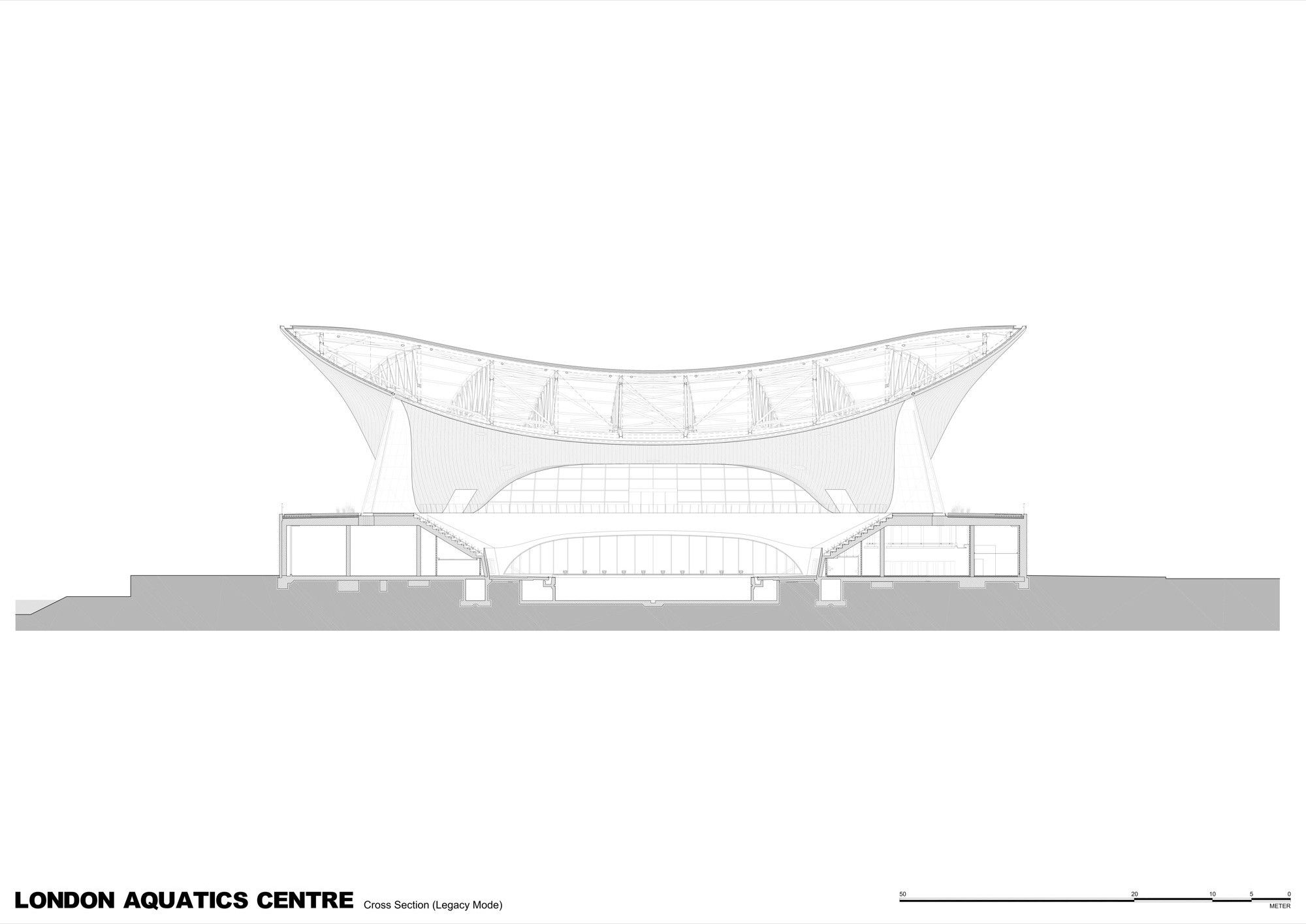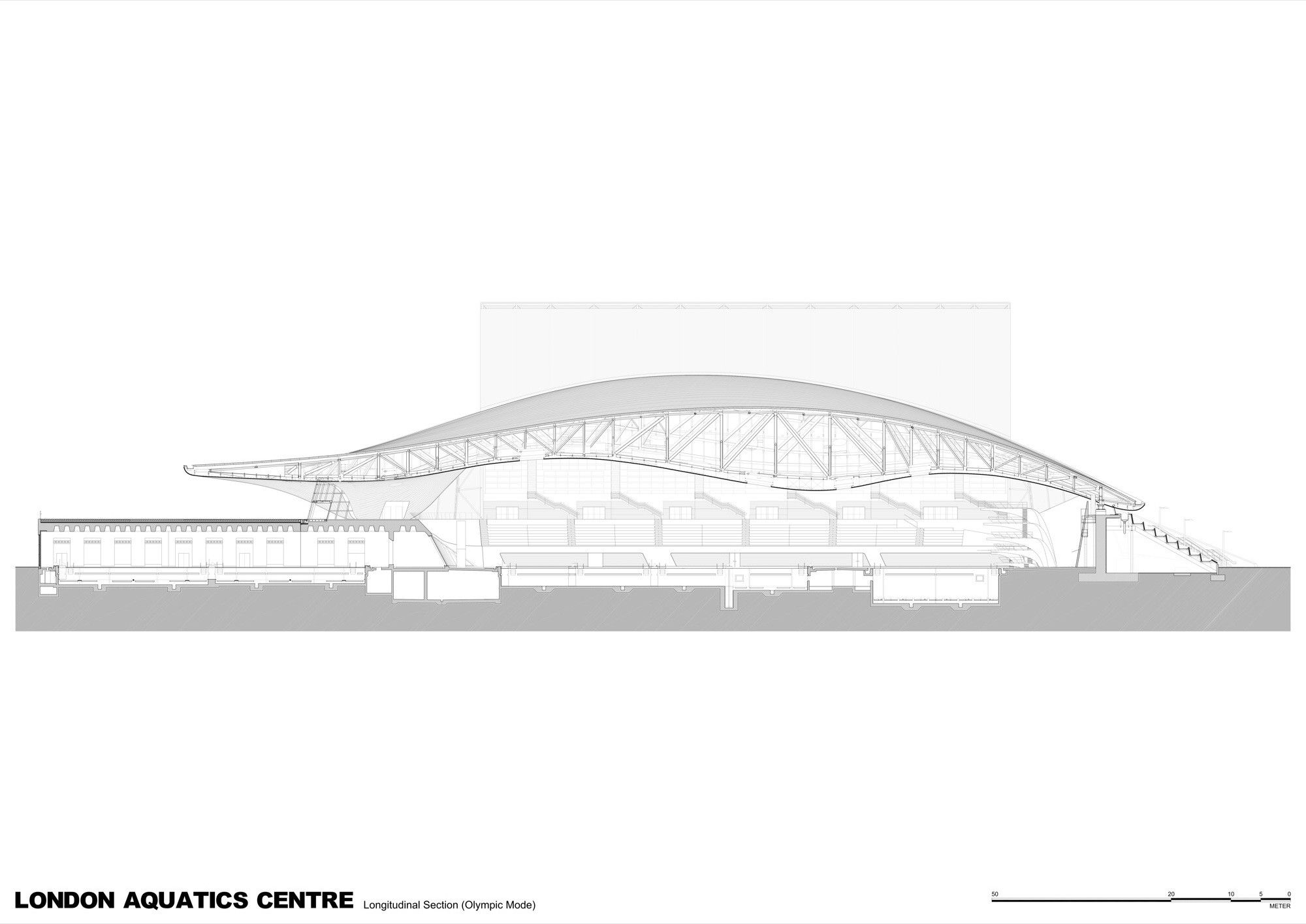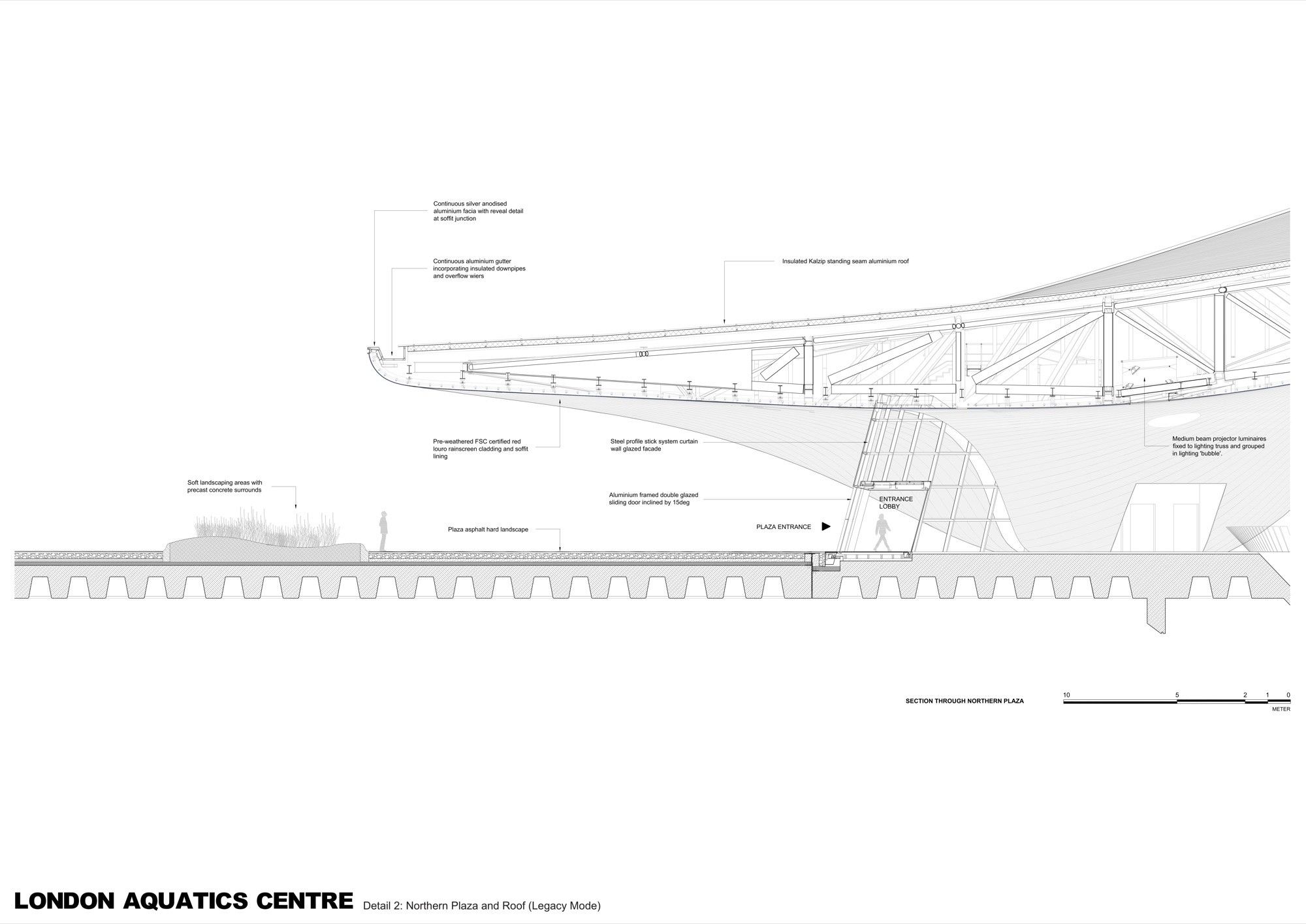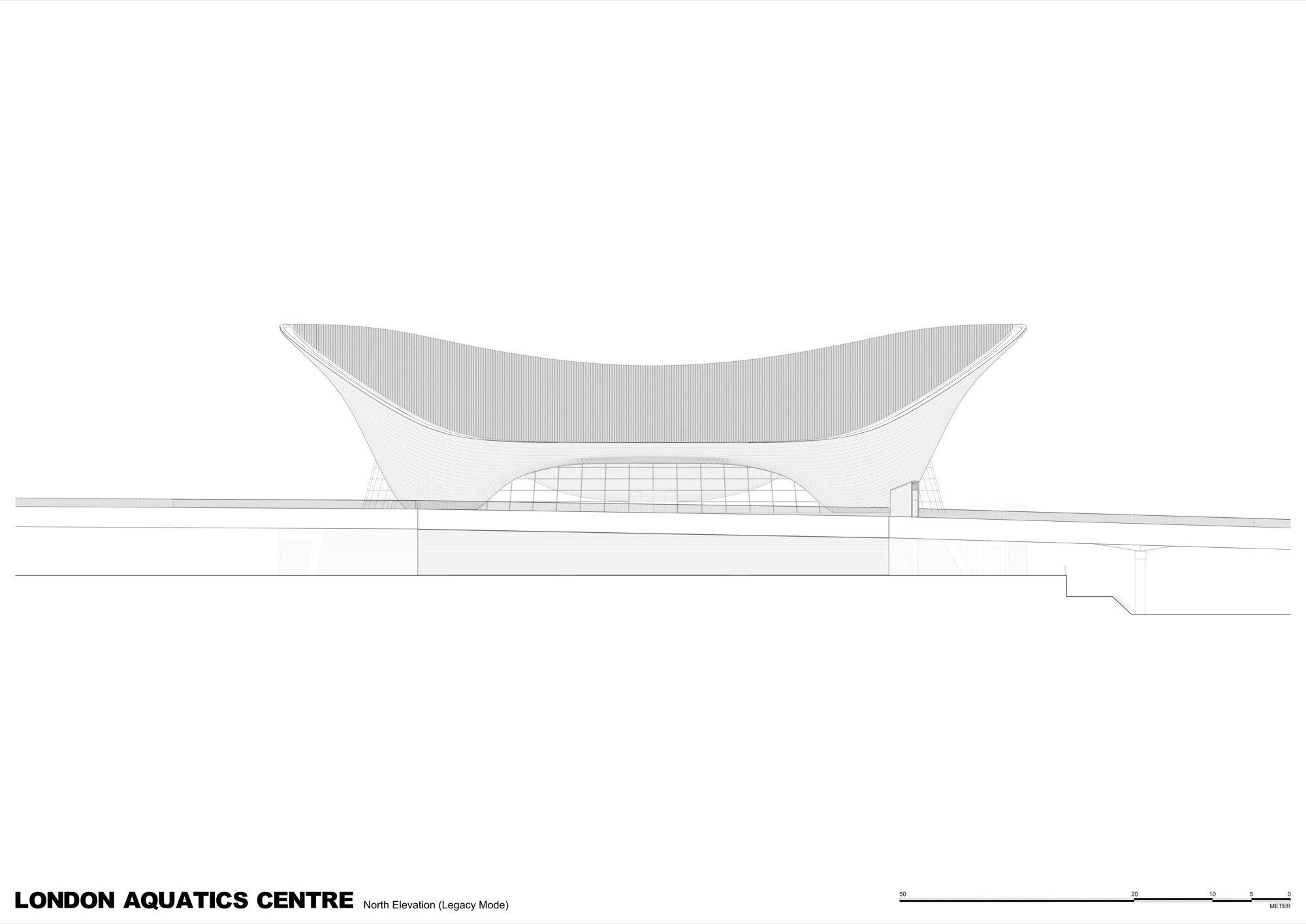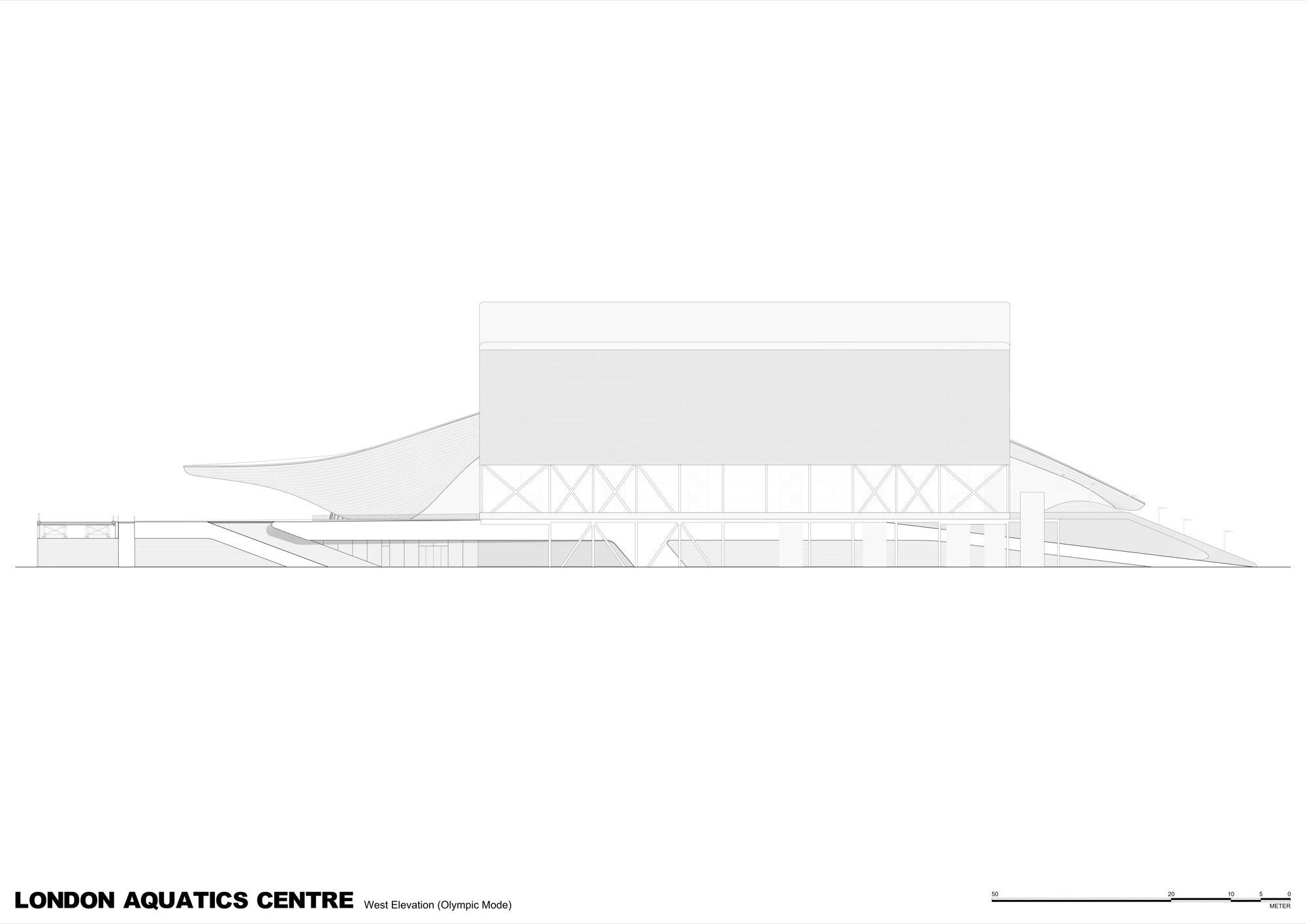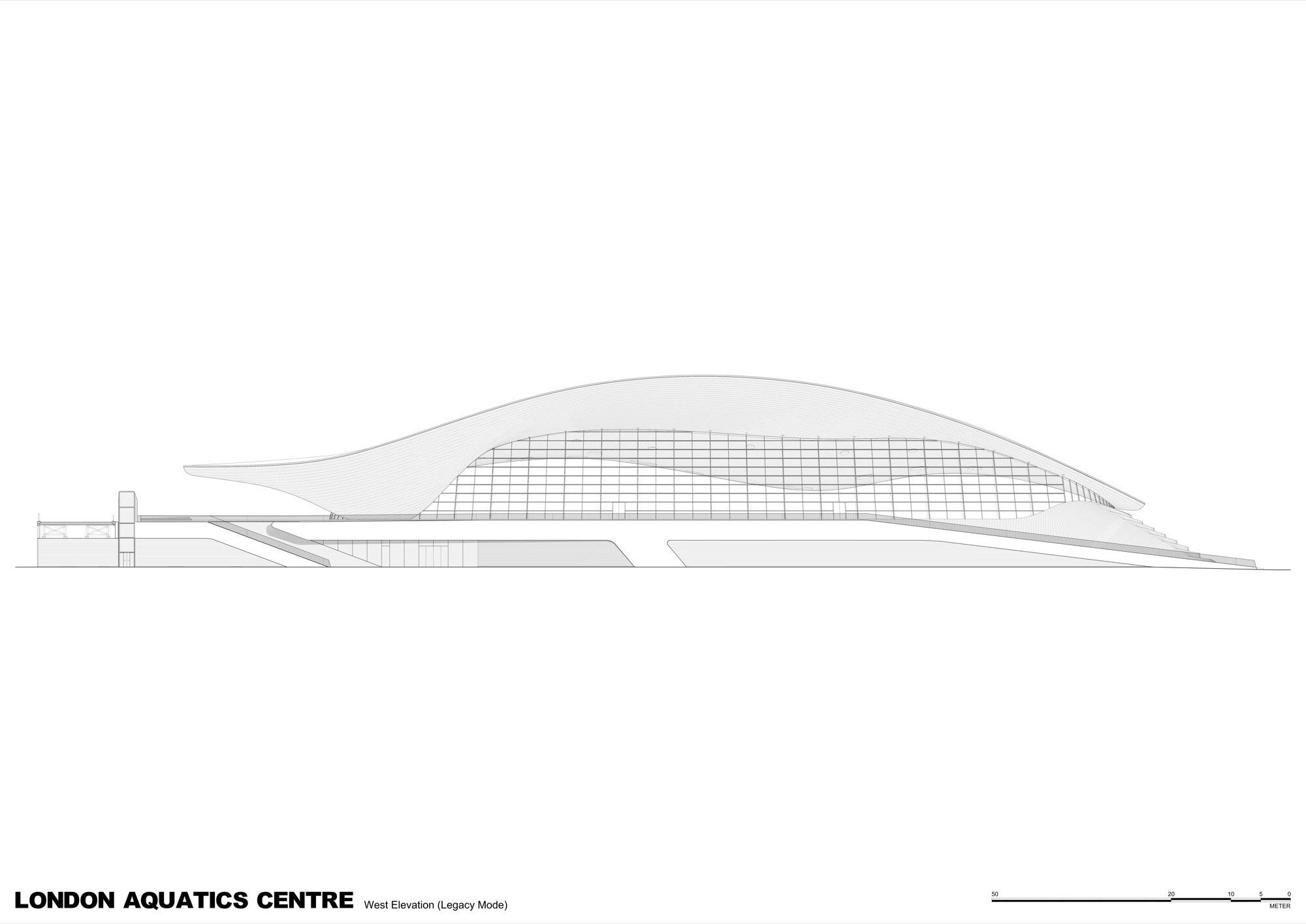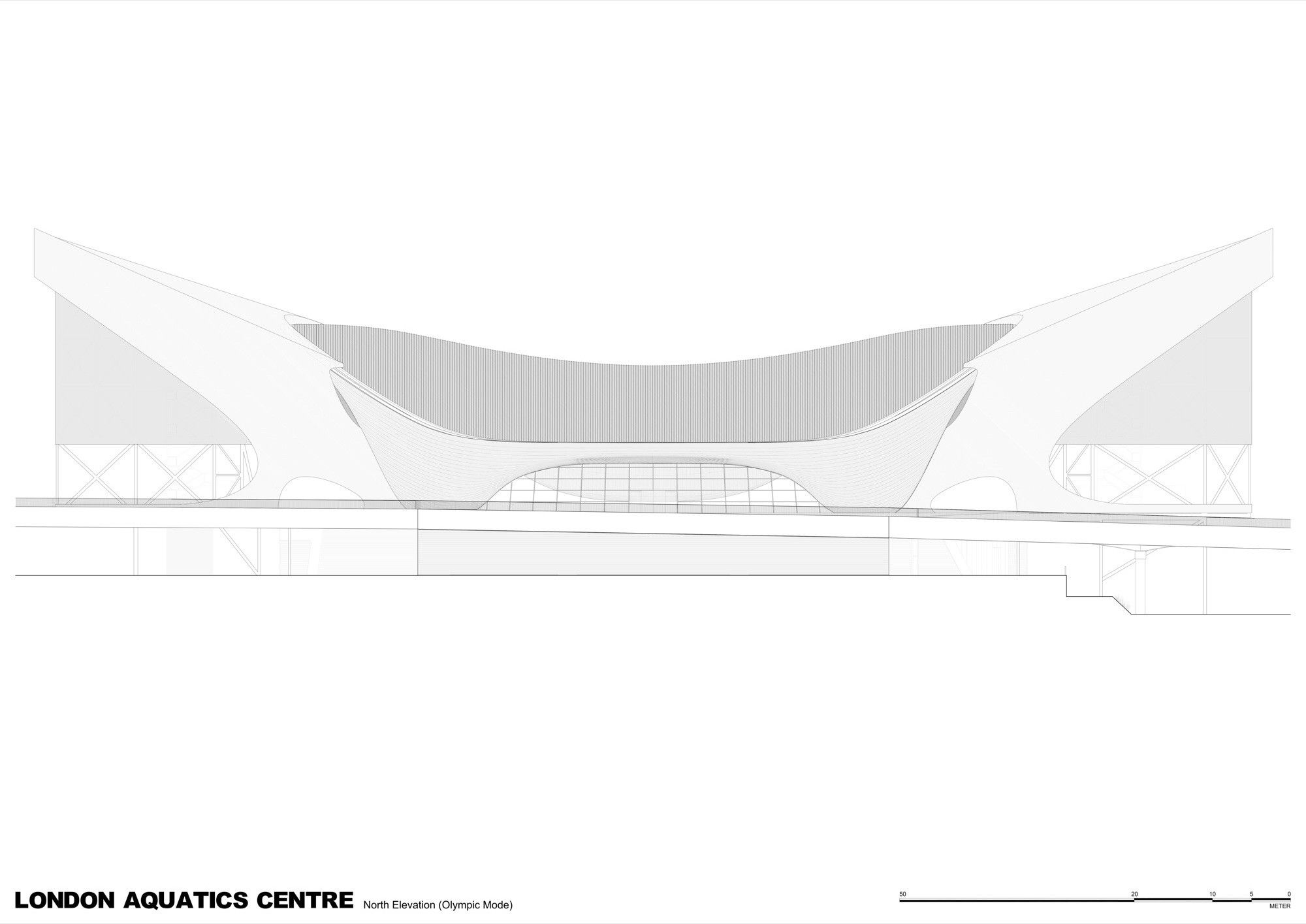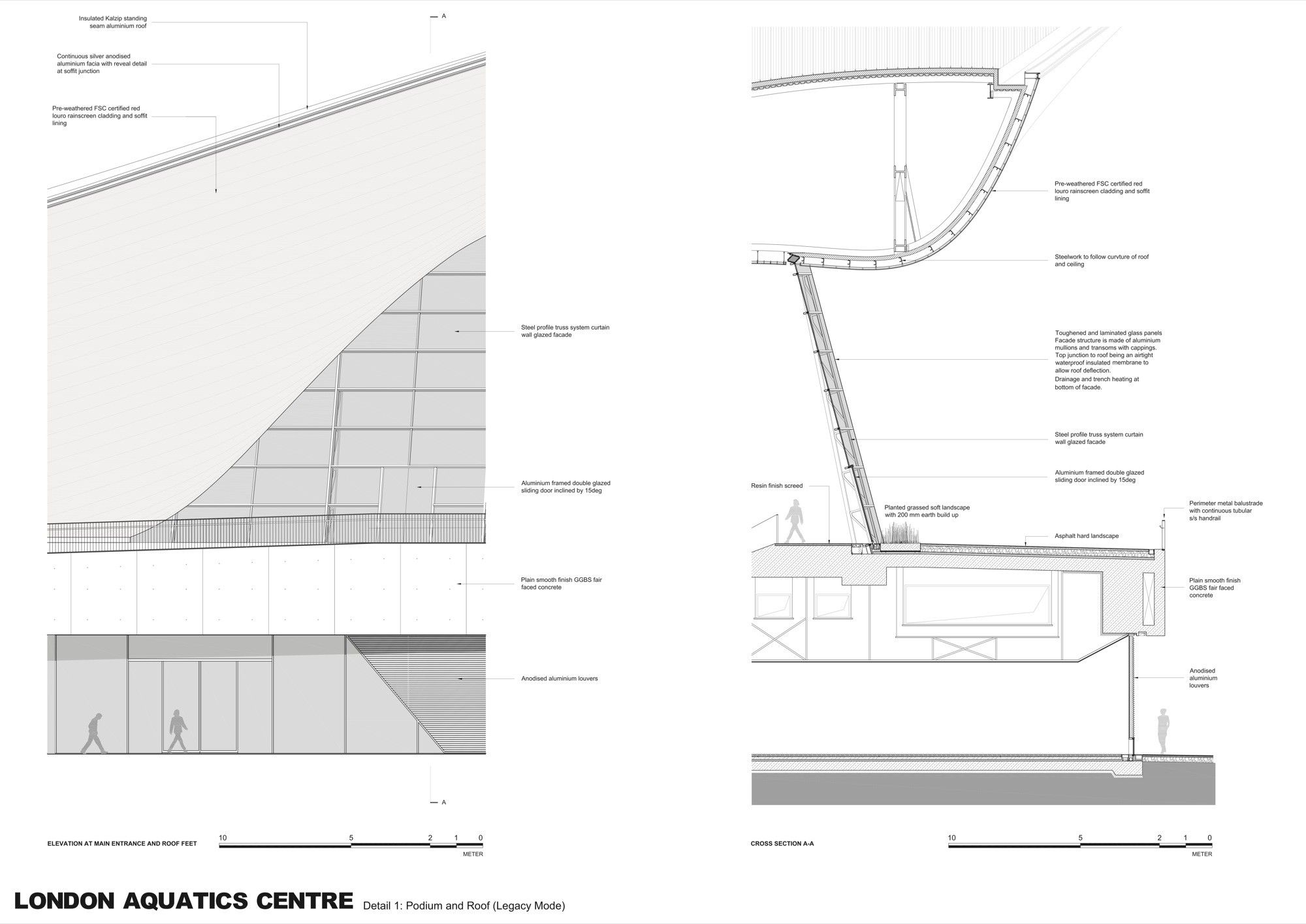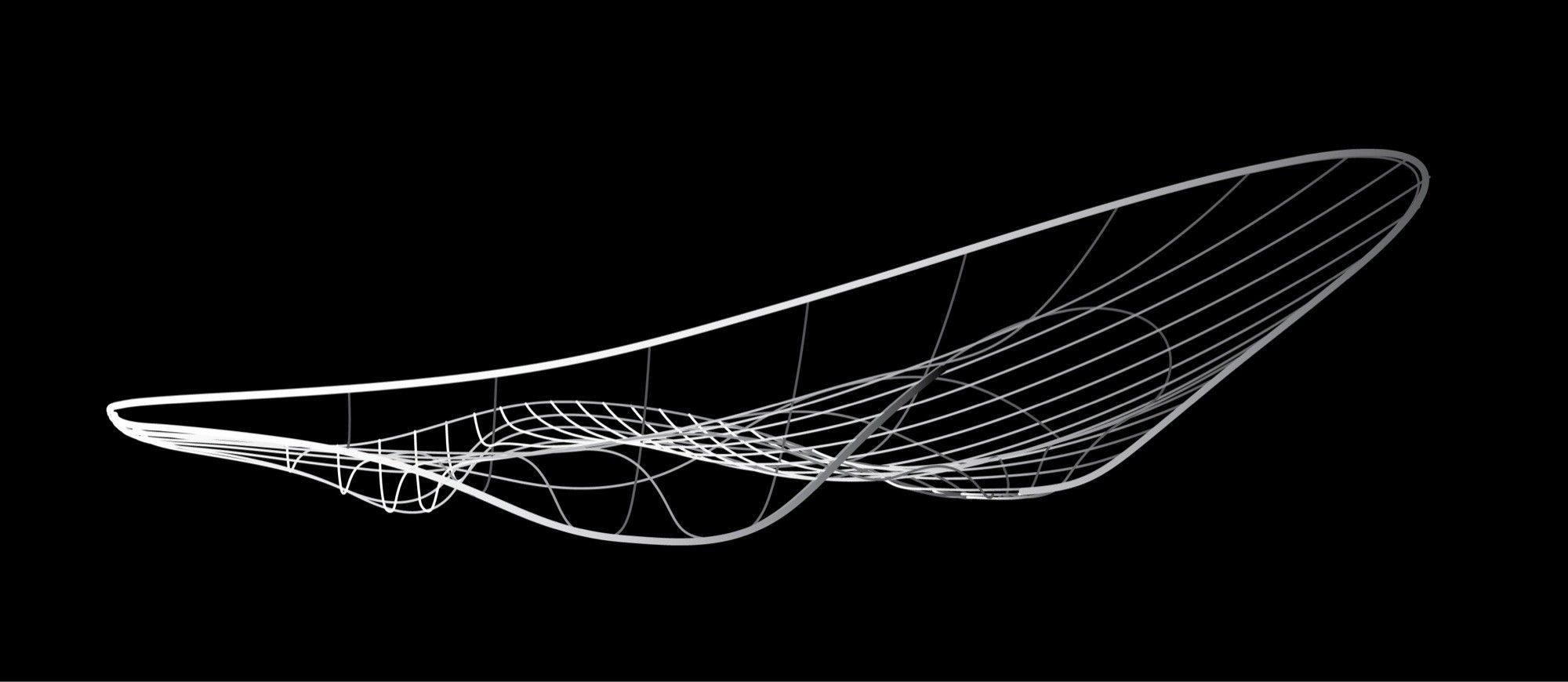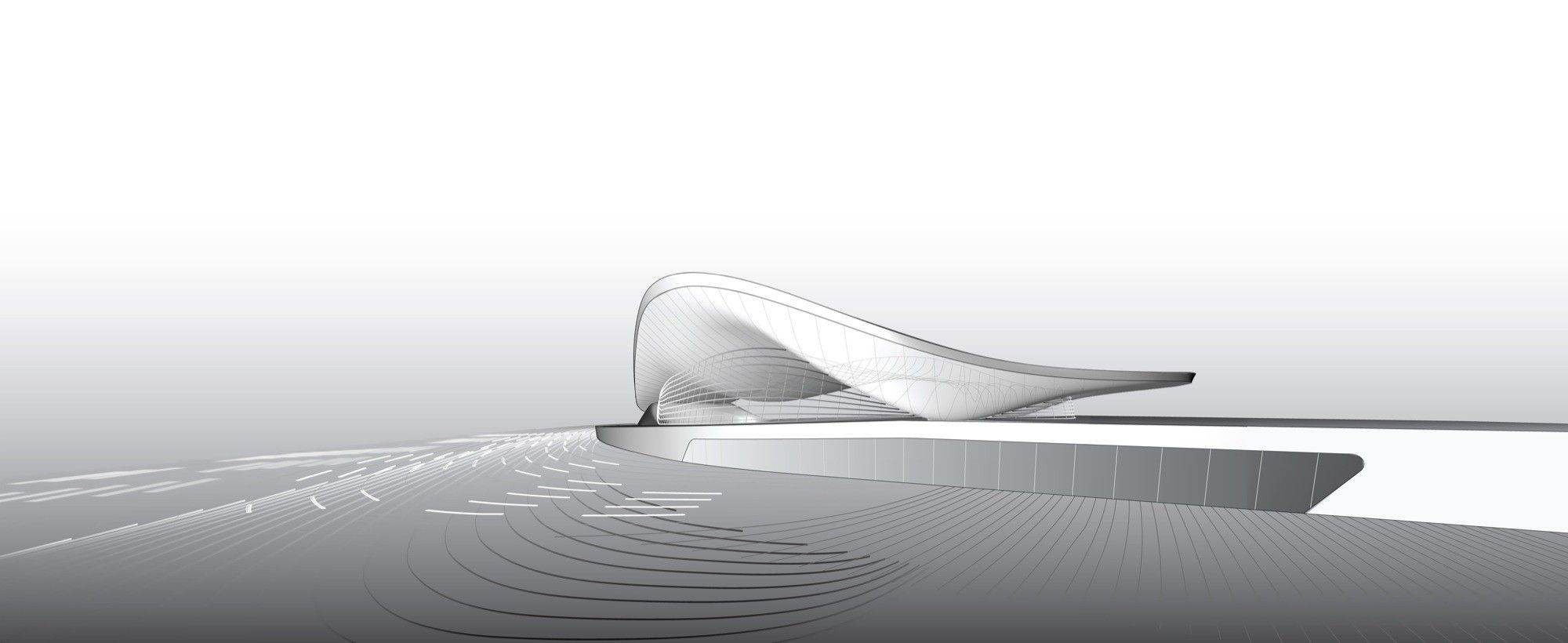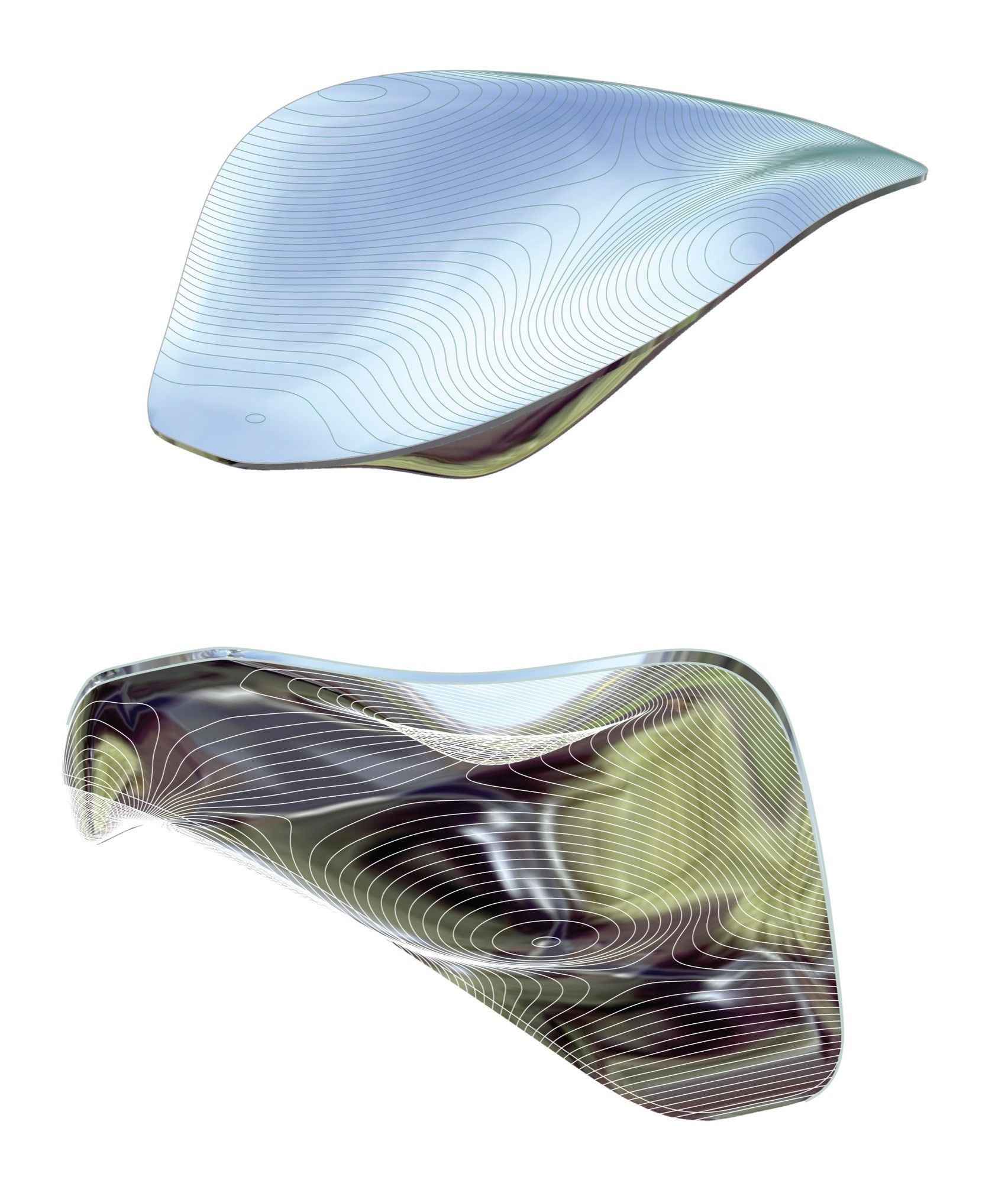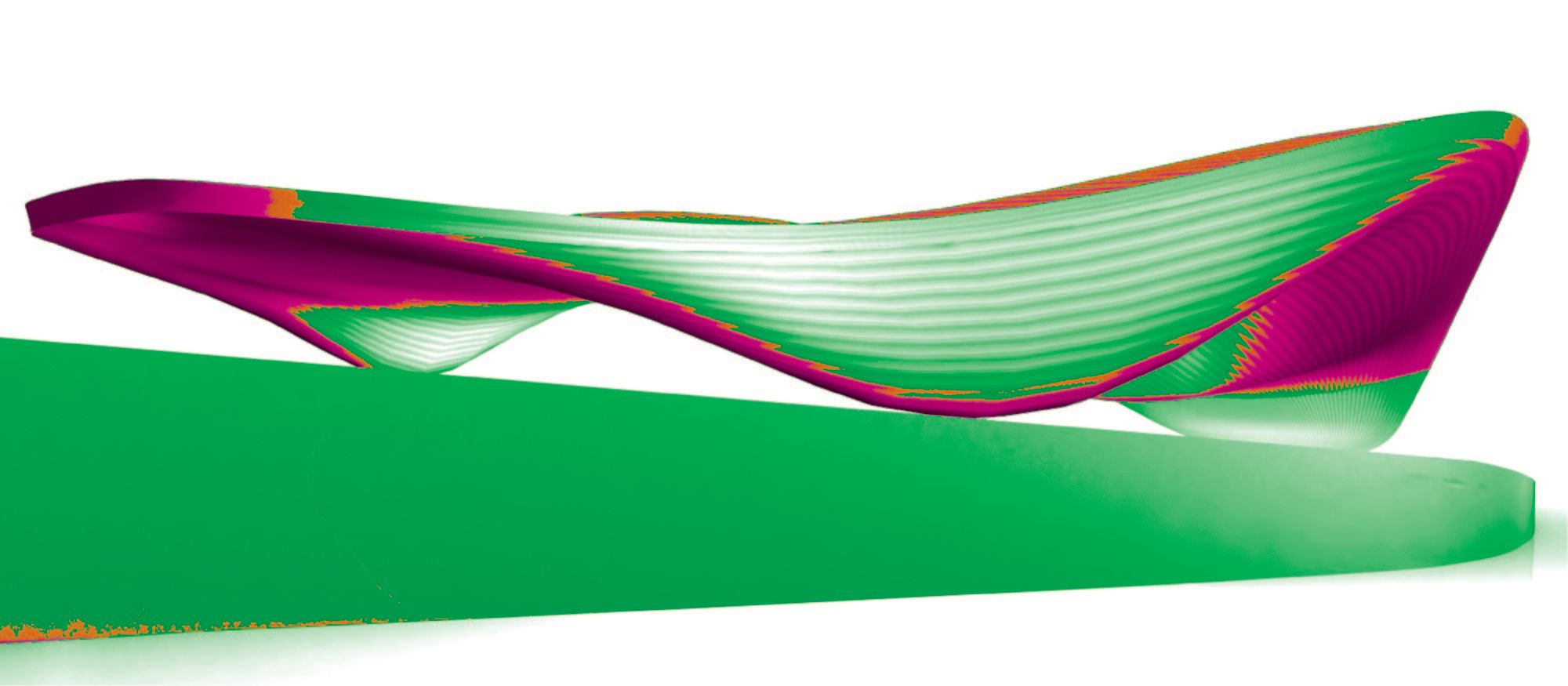The London Aquatics Centre, in Queen Elizabeth Olympic Park at Stratford, is an indoor facility with two 50 meter Olympic sized pools and a 25-meter diving pool with boards and platforms up to 10 meters, dry diving zone, a state-of-the-art 50-meter station gym, a cafe and a creche. The Centre was one of the main venues of the 2012 Summer Olympics. It was used for swimming, diving, and synchronized swimming events. However, now it is a vibrant and an accessible facility open to the whole community. It hosts a variety of activities including fitness and family swim sessions, swimming and diving lessons, as well as inclusive community sessions. It also hosts a range of national and international events.
Who Designed The Aquatic Centre 2012?
It is designed by Zaha Hadid Architects.
“After a post-Olympic makeover, London majestic Aquatics Centre is now flinging open its doors for everyone to enjoy, whether an elite athlete or enthusiastic amateur“, Mayor of London, Boris Johnson said.
The Concept of The London Aquatics Centre:
It was originally designed by world-renowned, award-winning architect Zaha Hadid in 2004. The architectural concept is inspired by the fluid geometries of water in motion, creating spaces and a surrounding environment that reflects the riverside landscapes of the Olympic park. An undulating roof sweeps up from the ground as a wave – enclosing the pools of the Centre with a unifying gesture of fluidity, while also describing the volume of the swimming and diving pools.
The London Aquatics Centre is planned on an orthogonal axis that is perpendicular to the Stratford City Bridge. All three pools are aligned on this axis. The training pool is located under the bridge with the competition and diving pools located within the large pool hall enclosed by the roof. The overall strategy is to frame the base of the pool hall as a podium connected to the Stratford City Bridge. The podium emerges from the bridge to the cascade around the pool hall to the lower level of the canal.
In total an impressive 628 panes of glass and 8 external doors have all been installed in the London Aquatics Centre, allowing lots of natural light into the pool. The Aquatics Centre is designed with an inherent flexibility to accommodate 2,800 seats, with an additional 1,000 seats available for major events.
The pool hall is expressed above the podium by a large roof with arches along with the same axis as the pools. Double-curvature geometry has been used to generate a parabolic arch structure that creates the unique characteristics of the roof.
The building’s sustainability credentials are inherent and exemplary. It achieved a BREEAM Innovation Credit for its unusual use of concrete mixes. Also, the design team minimized energy efficiencies including incorporating very high levels of insulation, well-sealed envelope, low-velocity ventilation systems with highly efficient heat recovery and water-based heating systems with variable speed pumps. In addition, the main pool is naturally lit. Mechanical systems have adaptable controls for maximum efficiency in use and the building is connected to the district heating system. Potable water demands were reduced by over 40% by reusing backwash in WCs and urinals, low-flow showers and basins deliver 35% savings as well. Rainwater harvesting provides irrigation for the green wall at the southern end of the building.
Overall, the building is sensual in its form with a generosity of space. It can be considered as a great building of our time due to its pure and powerful form. Undoubtedly, this building will be a favorite venue for Londoners for generations to come.
Project Info:
Architect: Zaha Hadid Architects
Location: Westminster, London, UK
Project Year: 2005-2011
Area: 15950 square meters
Client: Olympic Delivery Authority
Main Contractor: Balfour Beatty
Structural Engineers: Ove Arup & Partners
Services Engineers: Ove Arup & Partners
Photographs: Hufton+Crow, Helene Binet
Project Name: London Aquatics Centre
Photography by © Helene Binet
Photography by © Helene Binet
Photography by © Helene Binet
Photography by © Helene Binet
Photography by © Helene Binet
Photography by © Helene Binet
Photography by © Helene Binet
Photography by © Helene Binet
Photography by © Helene Binet
Photography by © Helene Binet
Photography by © Helene Binet
Photography by © Helene Binet
Photography by © Helene Binet
Photography by © Helene Binet
Photography by © Helene Binet
Photography by © Helene Binet
Photography by © Helene Binet
Photography by © Helene Binet
Photography by © Helene Binet
Photography by © Helene Binet
Photography by © Helene Binet
Photography by © Helene Binet
Photography by © Helene Binet
Photography by © Helene Binet
Photography by © Helene Binet
Photography by © Helene Binet
Photography by © Helene Binet
Photography by © Helene Binet
Photography by © Helene Binet
Photography by © Helene Binet
Photography by © Helene Binet
Photography by © Helene Binet
Photography by © Helene Binet
Photography by © Helene Binet
Photography by © Helene Binet
Photography by © Helene Binet
Photography by © Helene Binet
Photography by © Helene Binet
Photography by © Helene Binet
Photography by © Helene Binet
Site Plan (Olympic Mode)
Site Plan (Legacy Mode)
Ground Floor Plan (Legacy Mode)
First Floor Plan (Legacy Mode)
First Floor Plan (Olympic Mode)
Second Floor Plan (Olympic Mode)
Cross Section (Legacy Mode)
Ground Floor Plan (Olympic Mode)
Longitudinal Section (Legacy Mode)
Cross Section (Olympic Mode)
Longitudinal Section (Olympic Mode)
Northern Plaza & Roof (Legacy Mode)
North Elevation (Legacy Mode)
West Elevation (Olympic Mode)
West Elevation (Legacy Mode)
North Elevation (Olympic Mode)
Podium & Roof (Legacy Mode)
Graphic Studies
Graphic Studies
Graphic Studies
Graphic Studies


